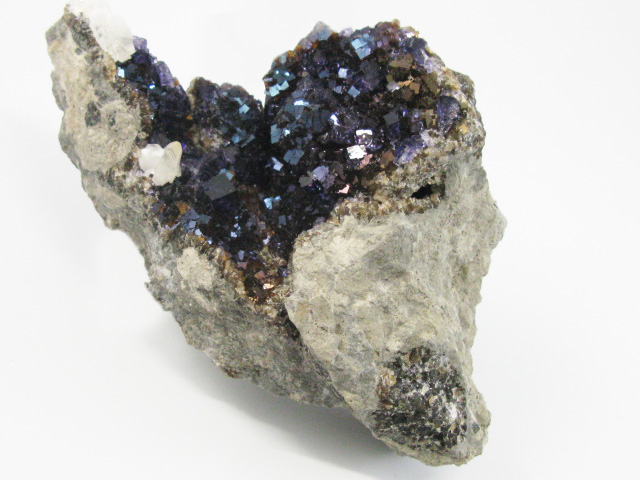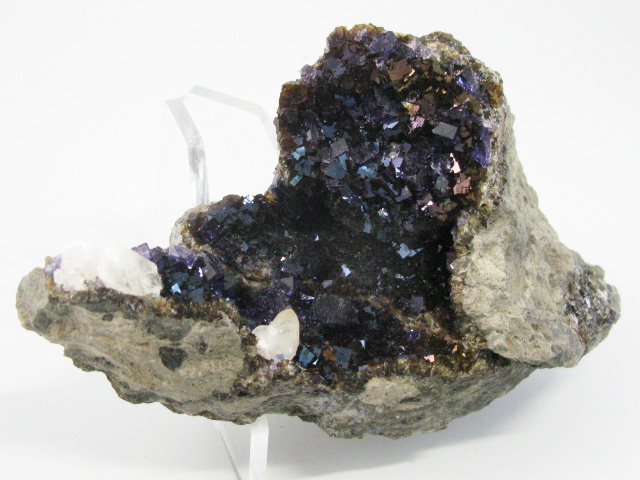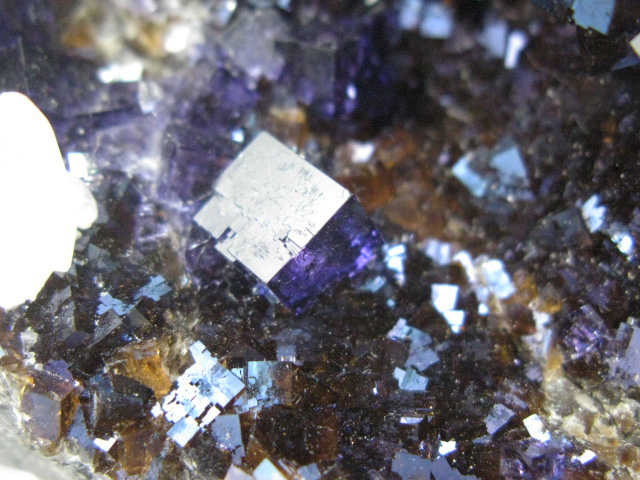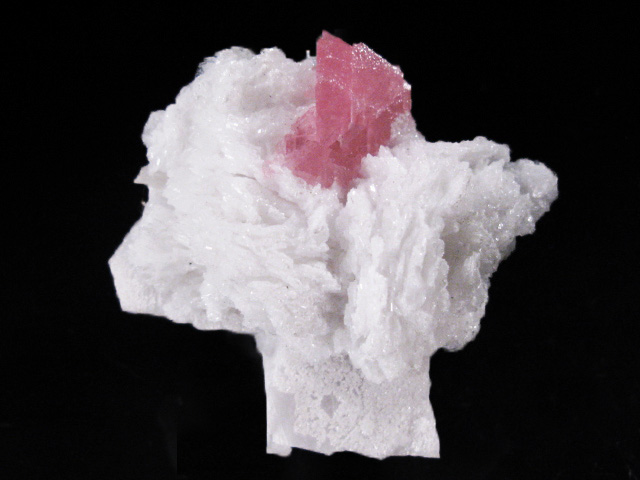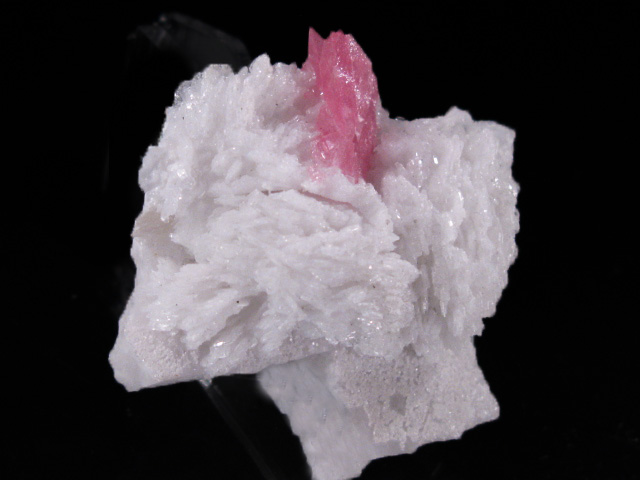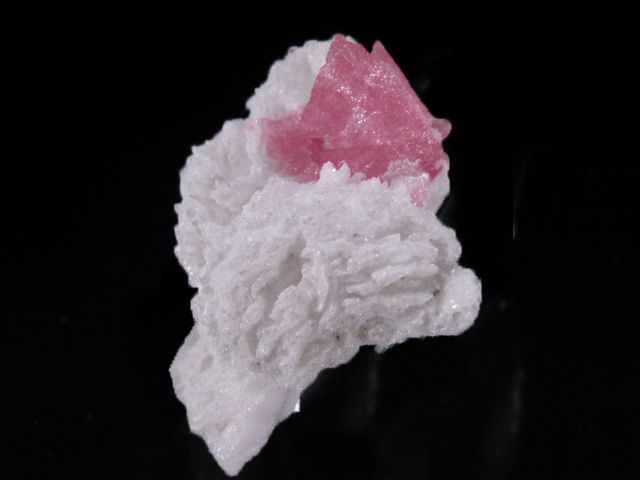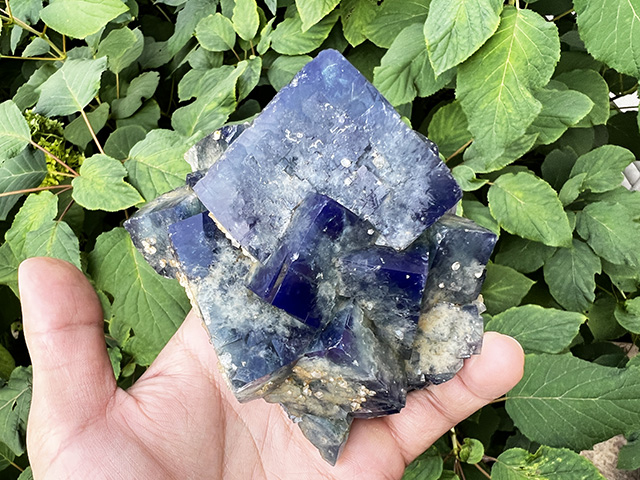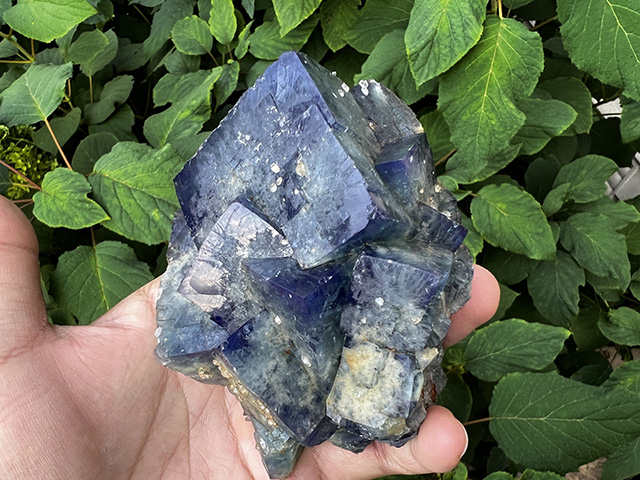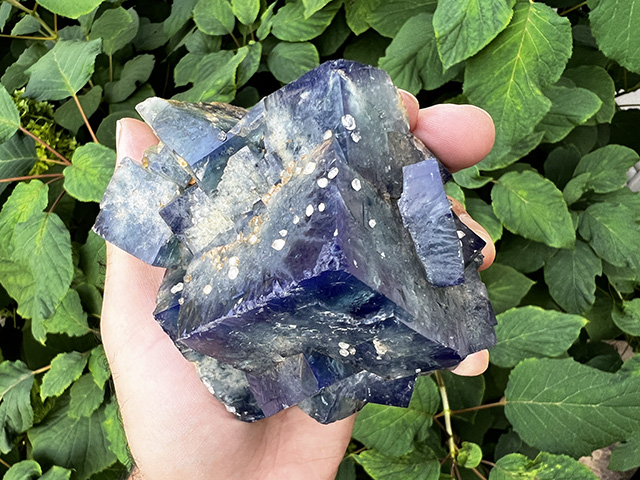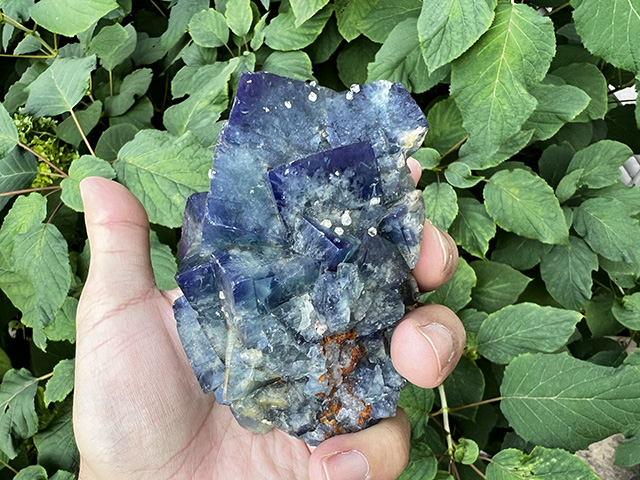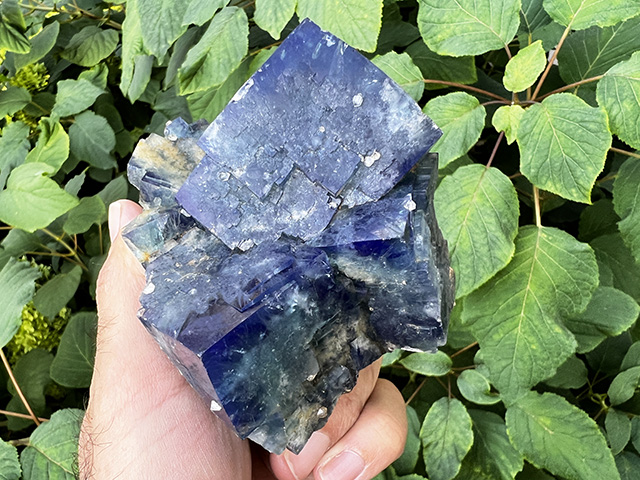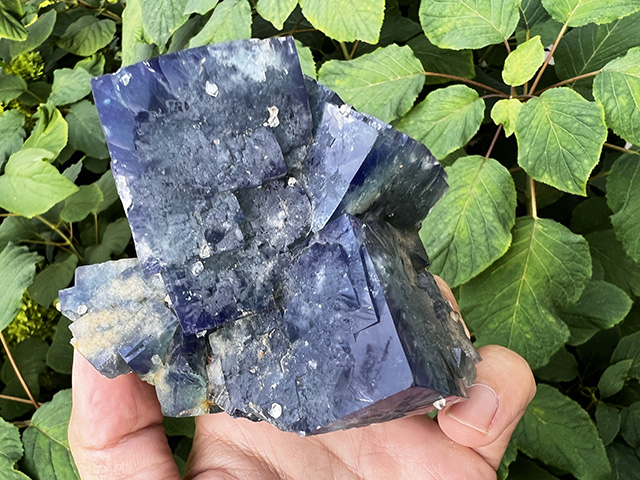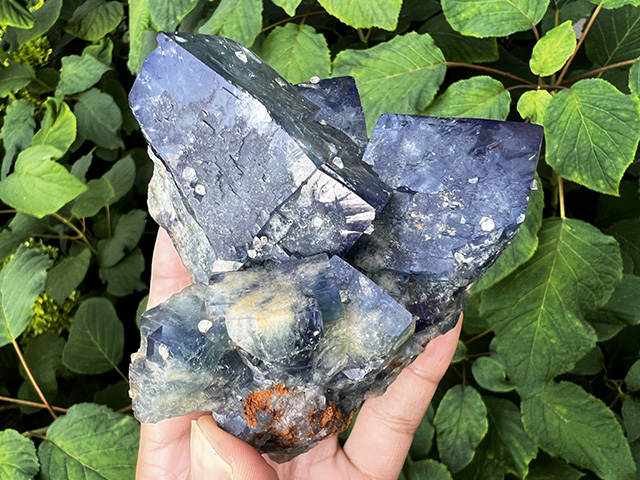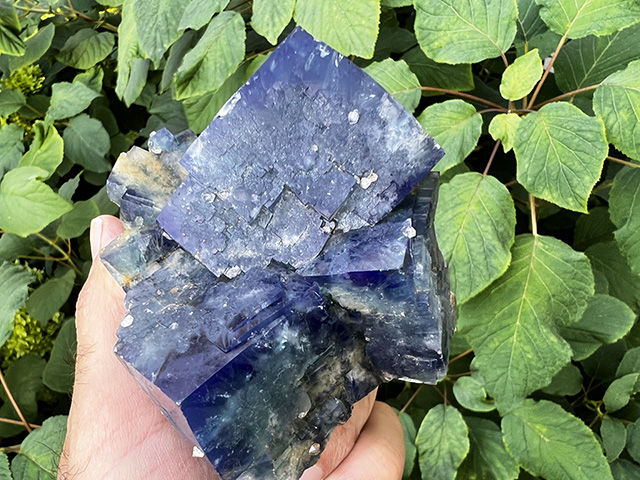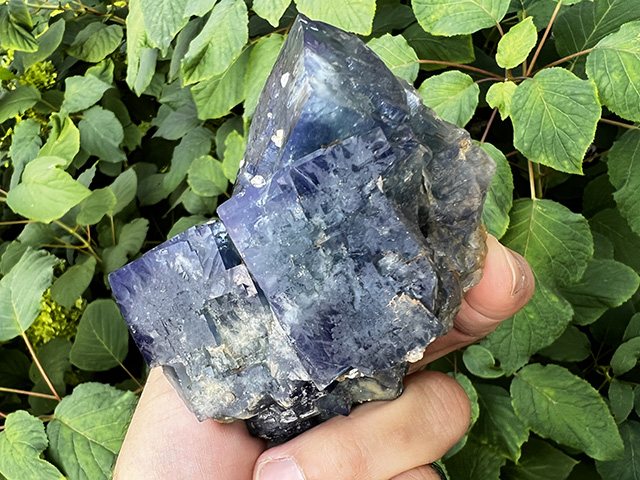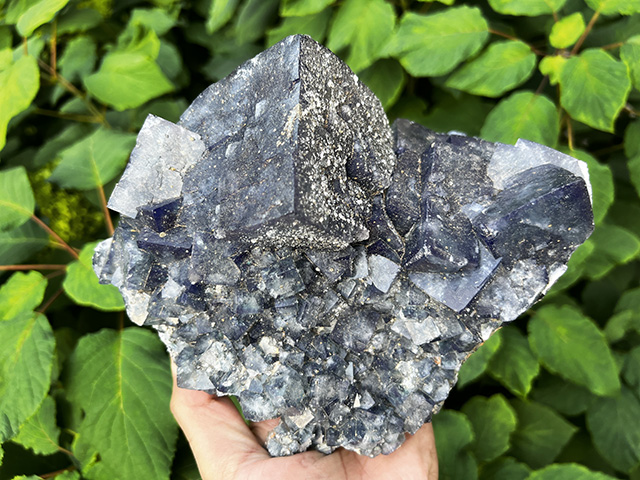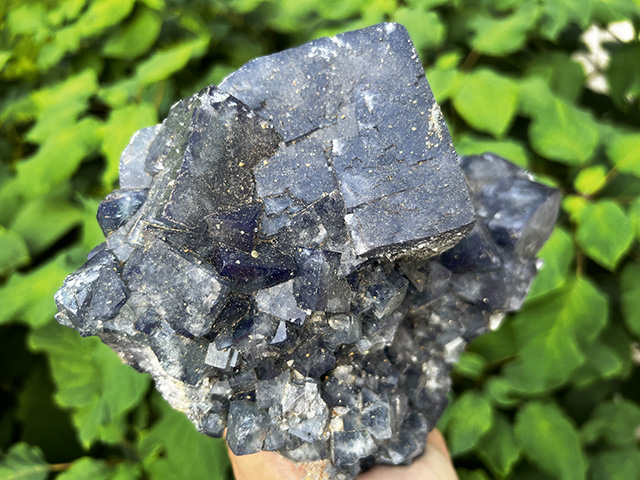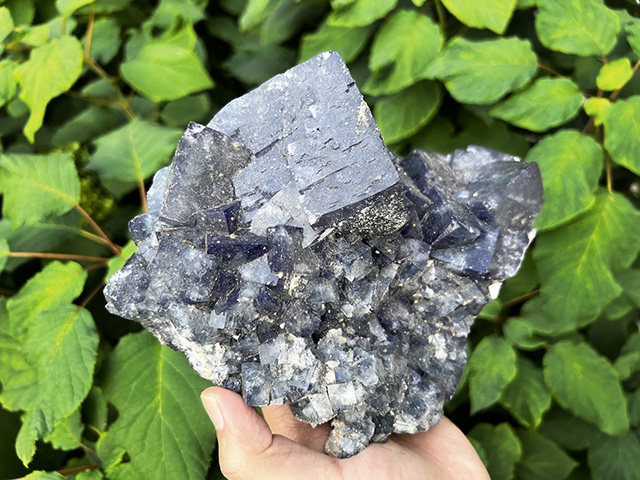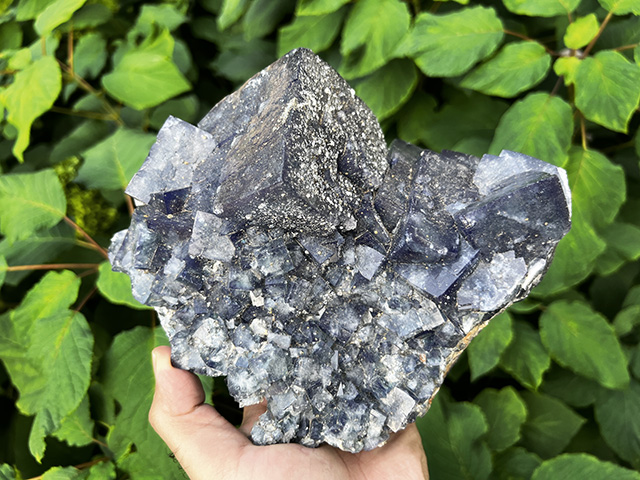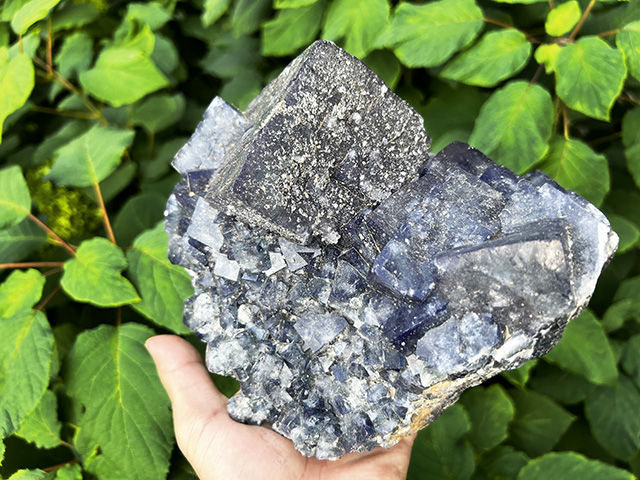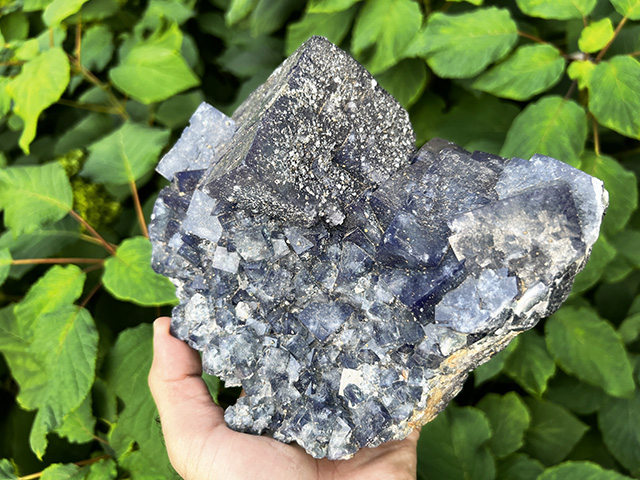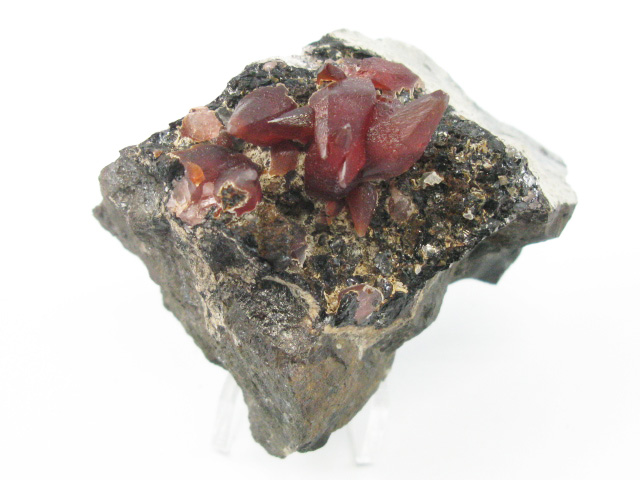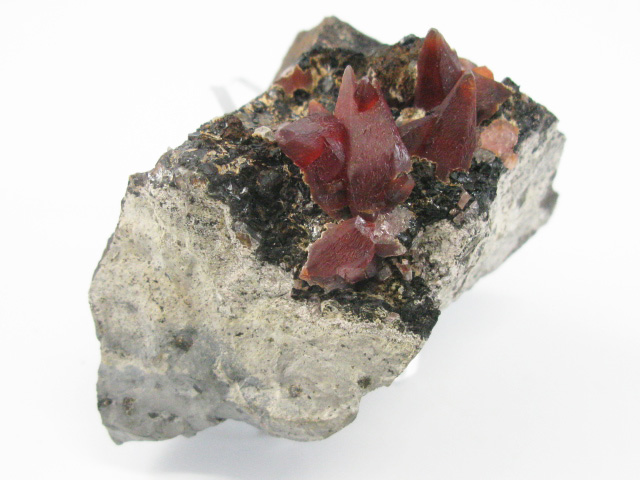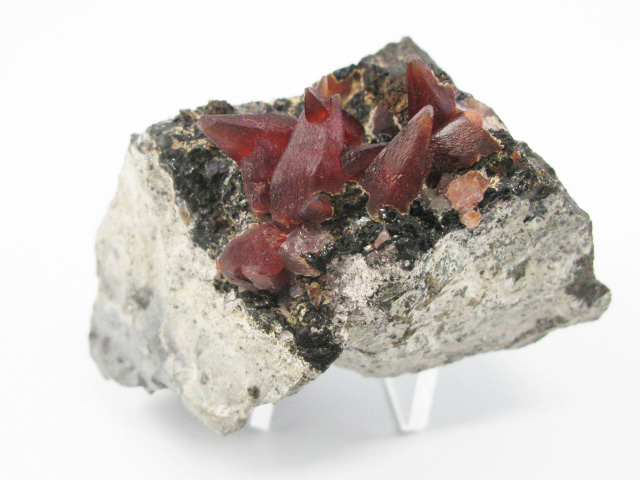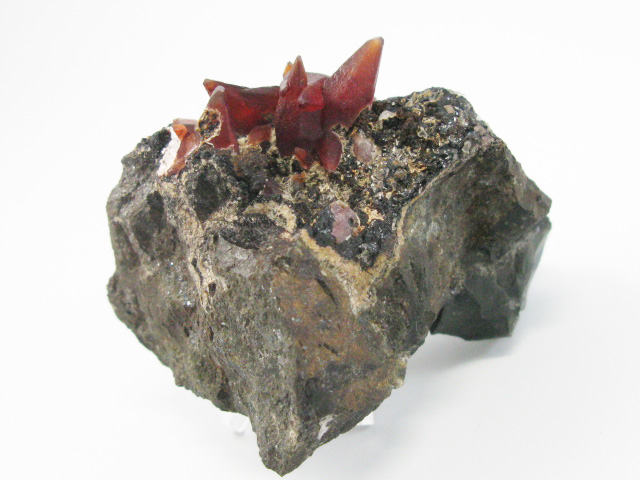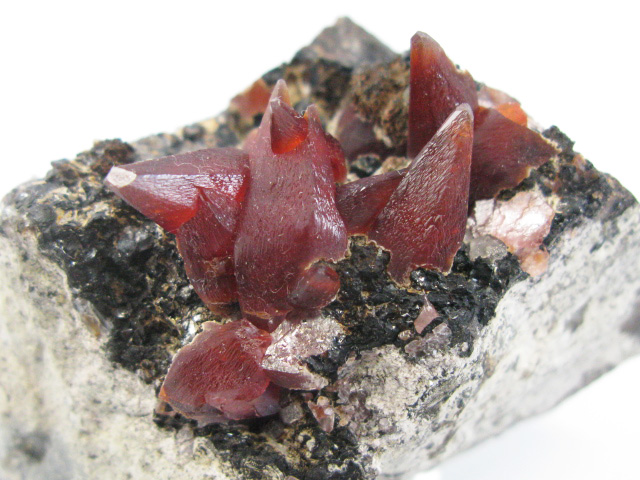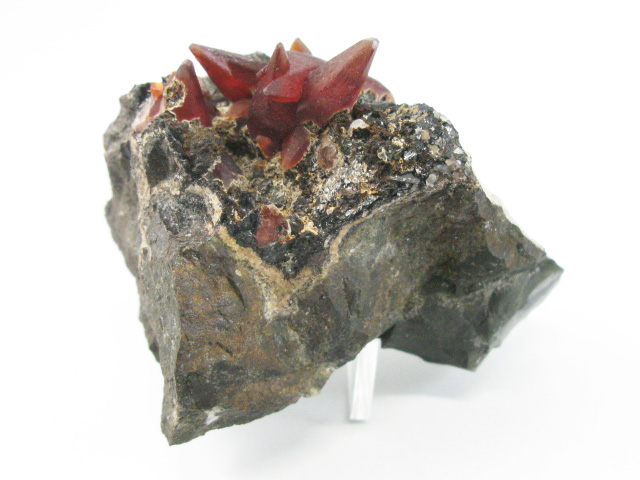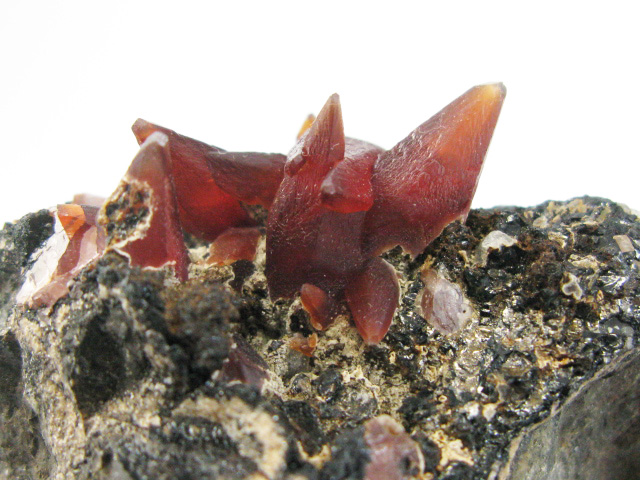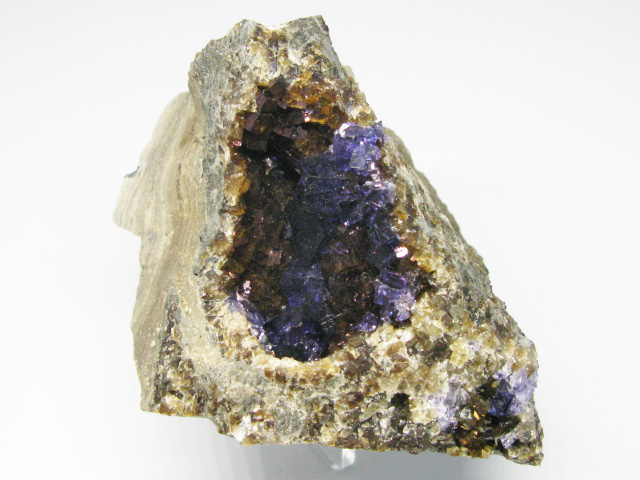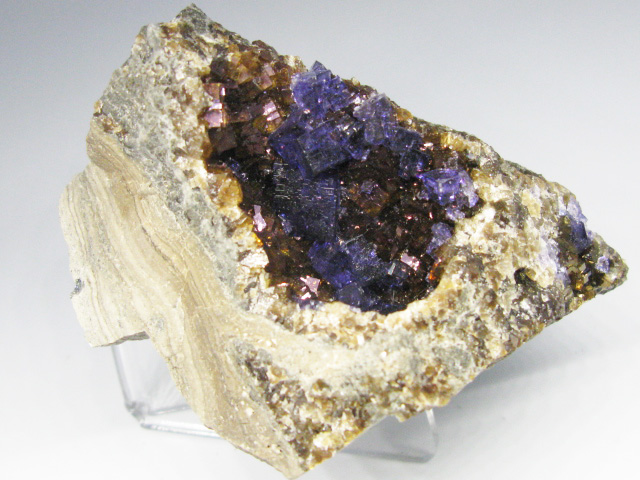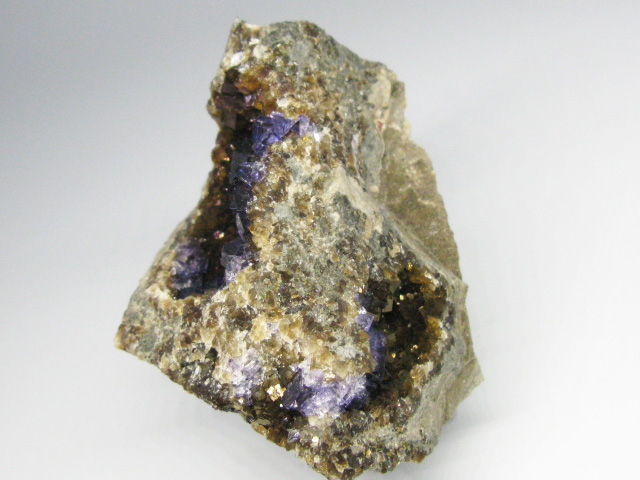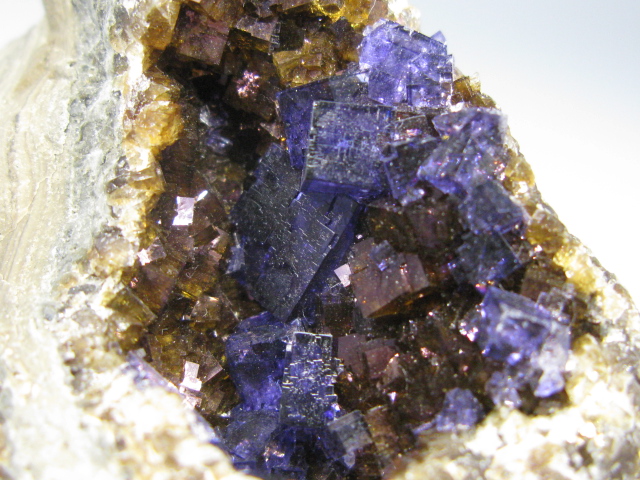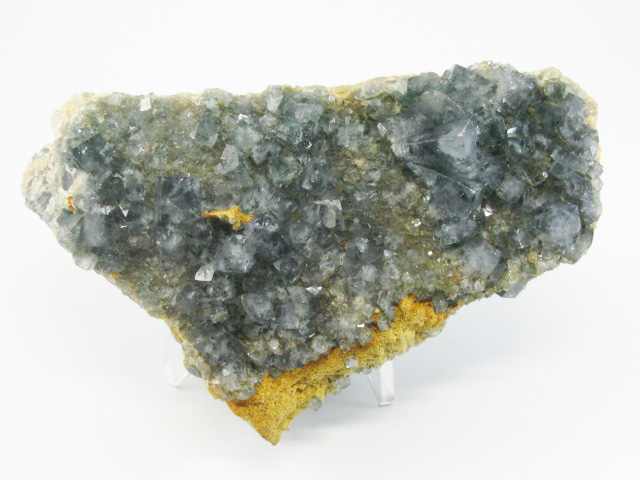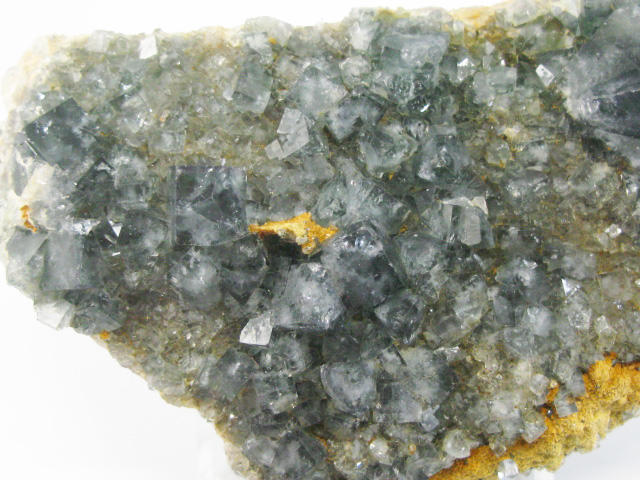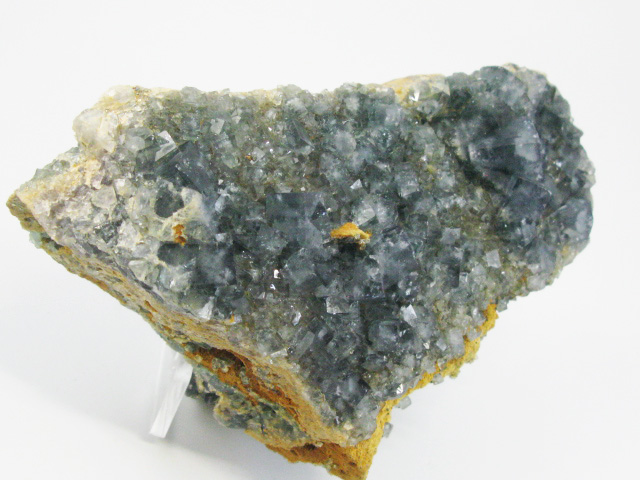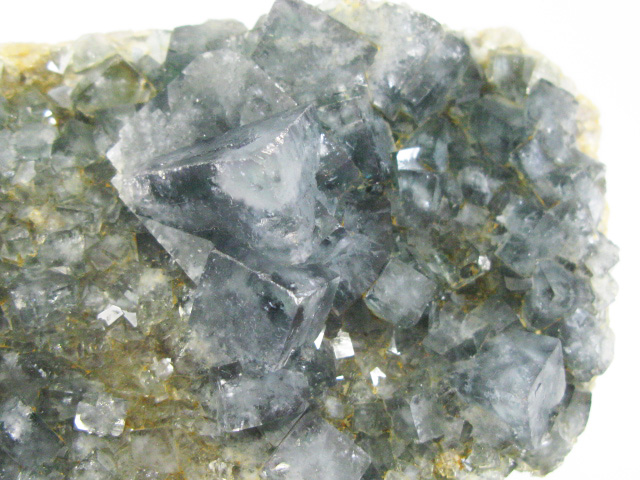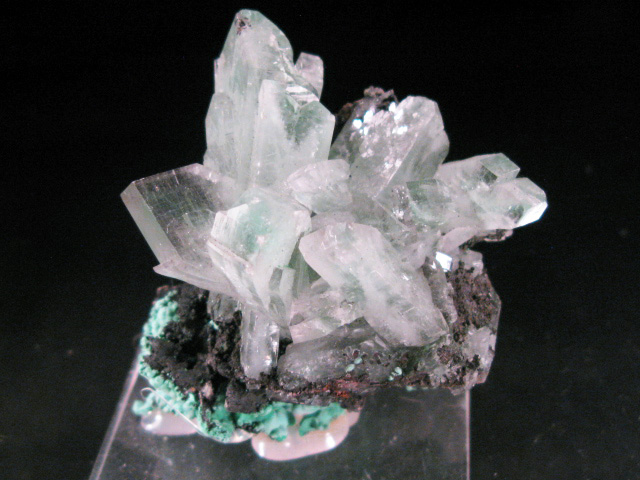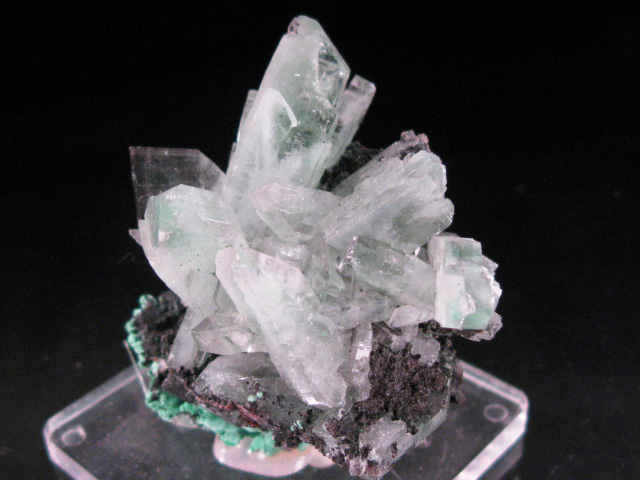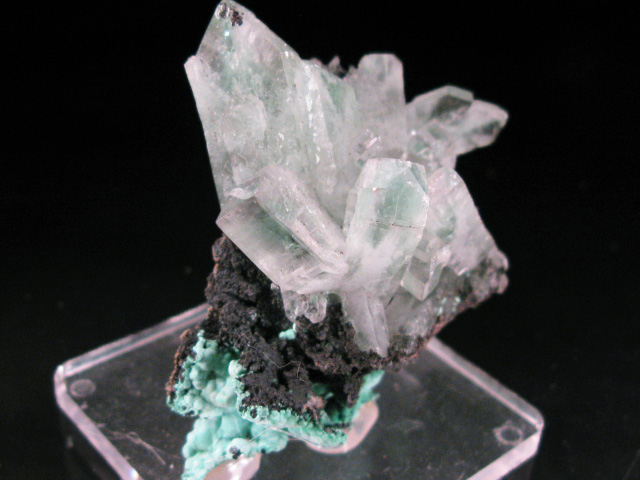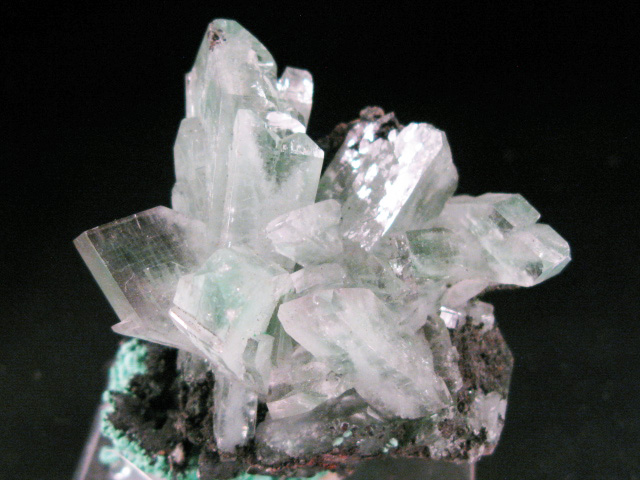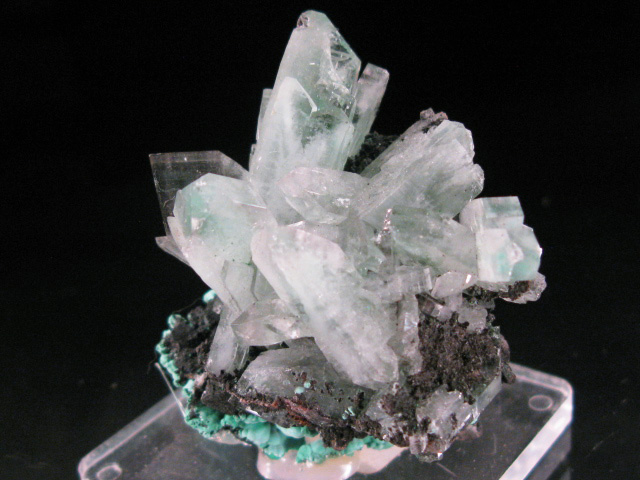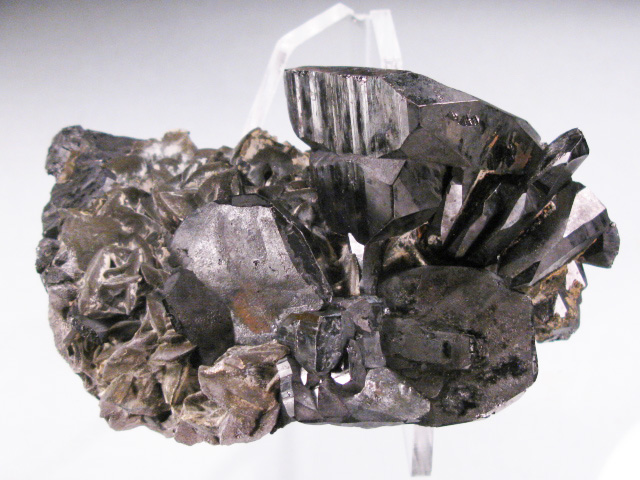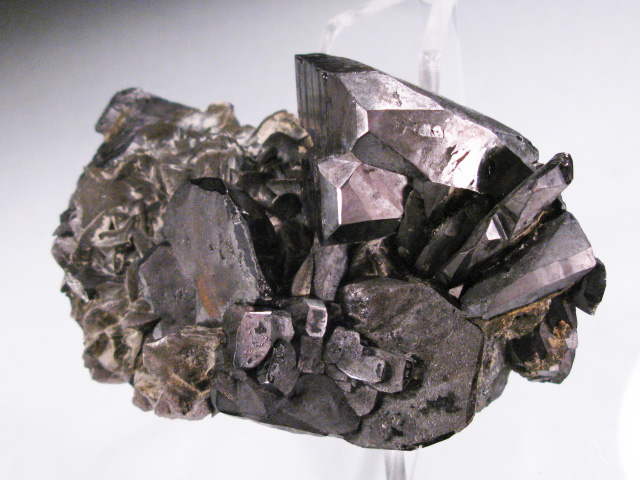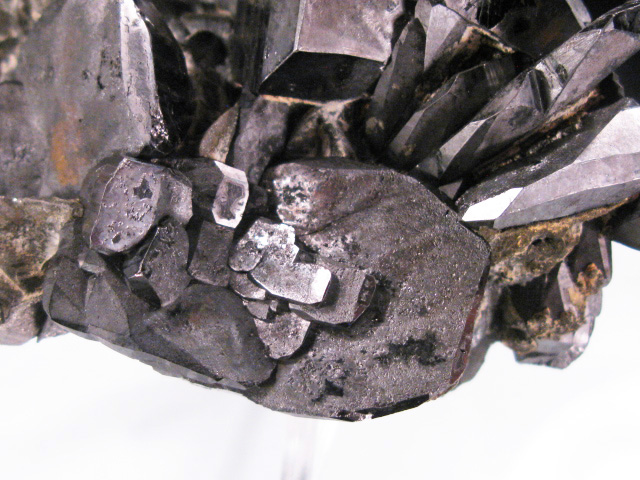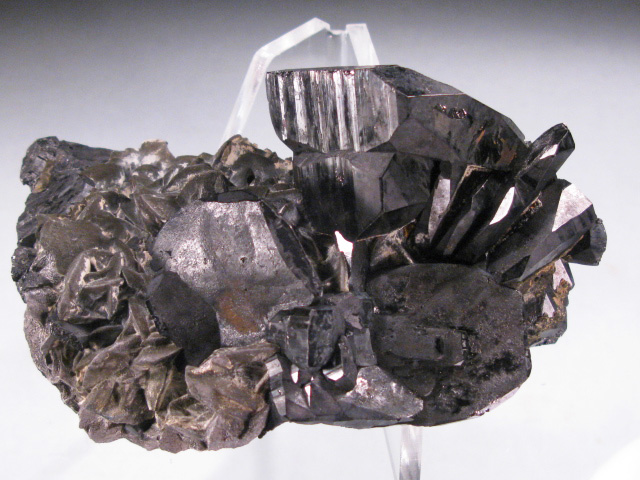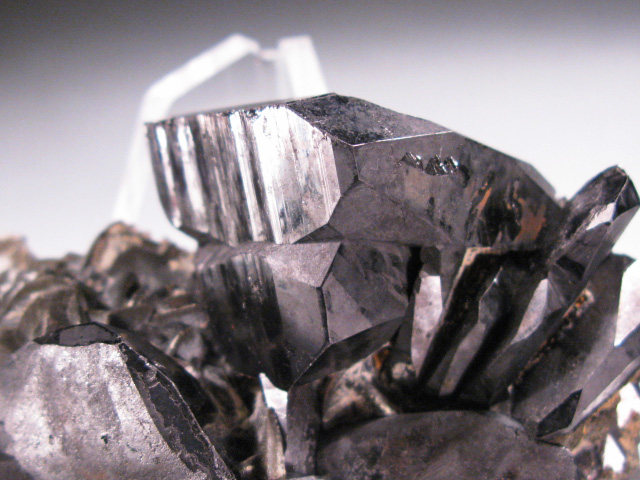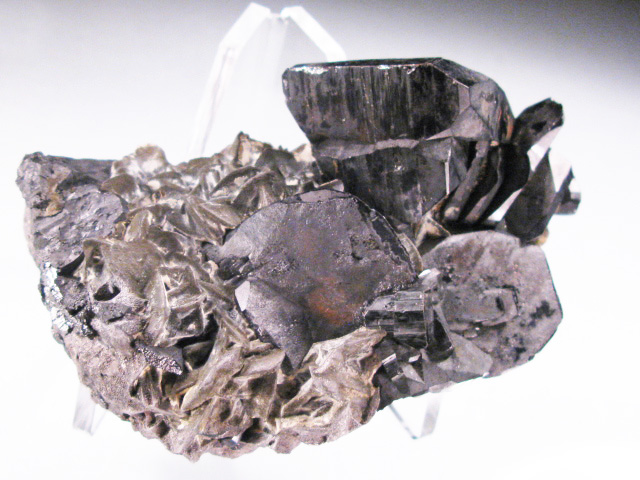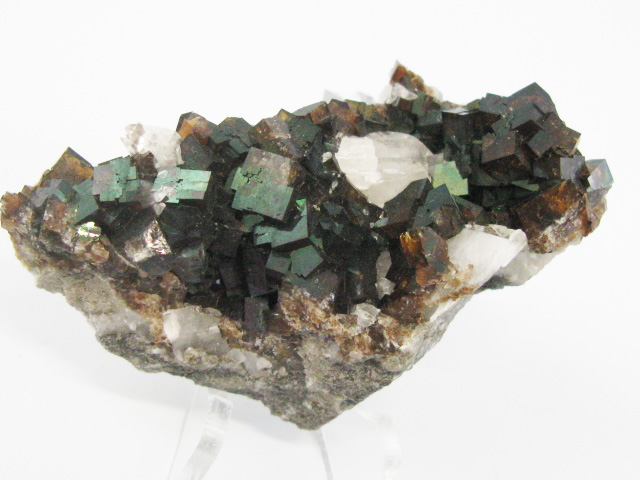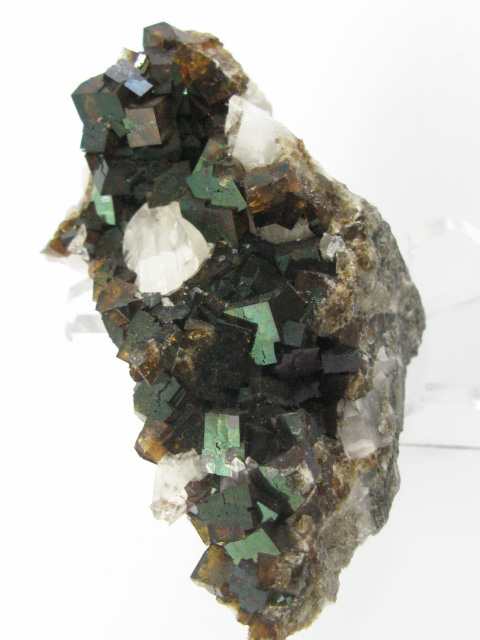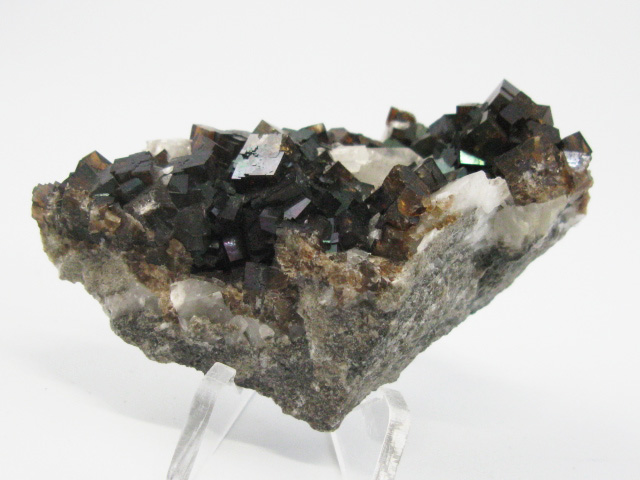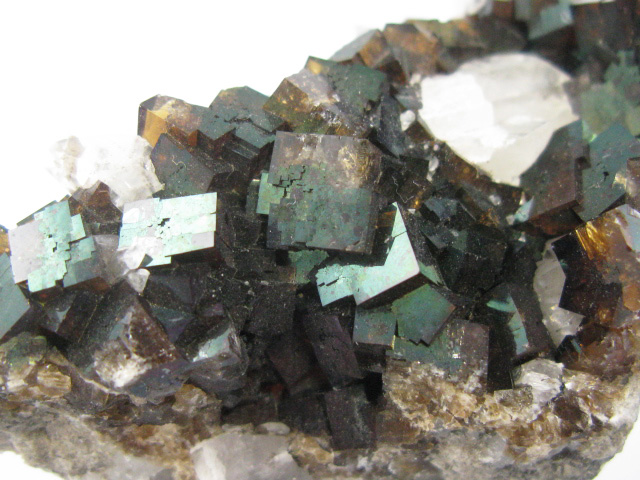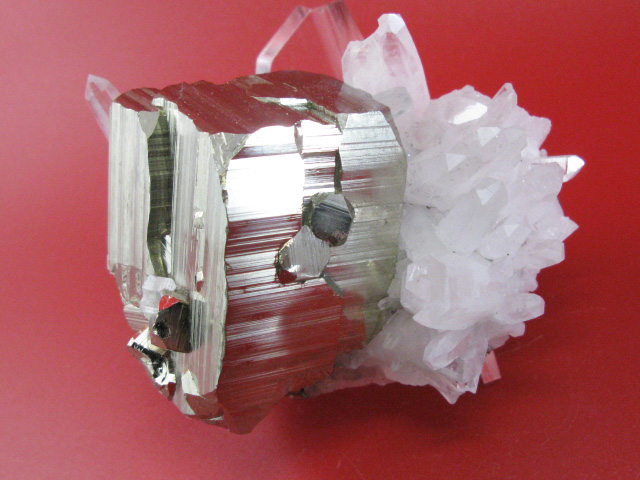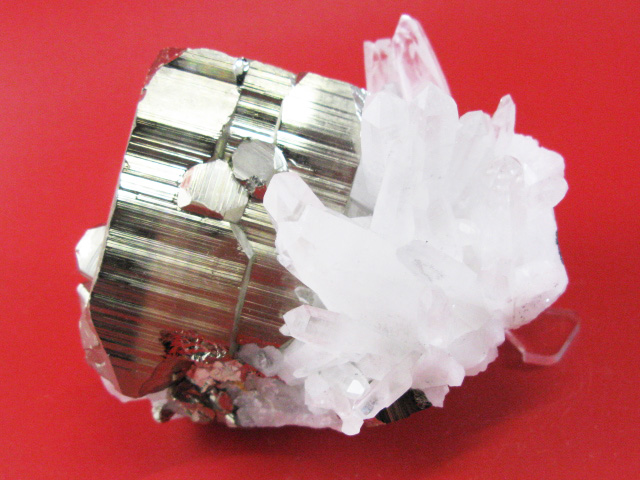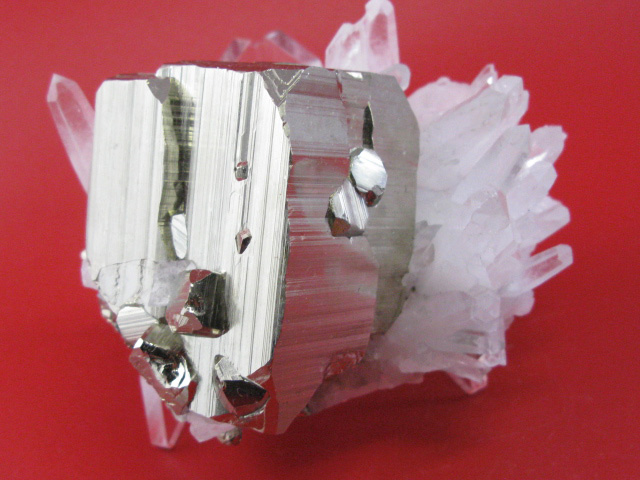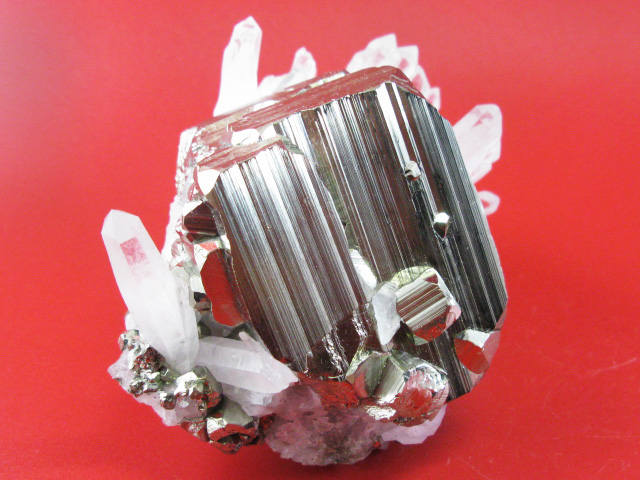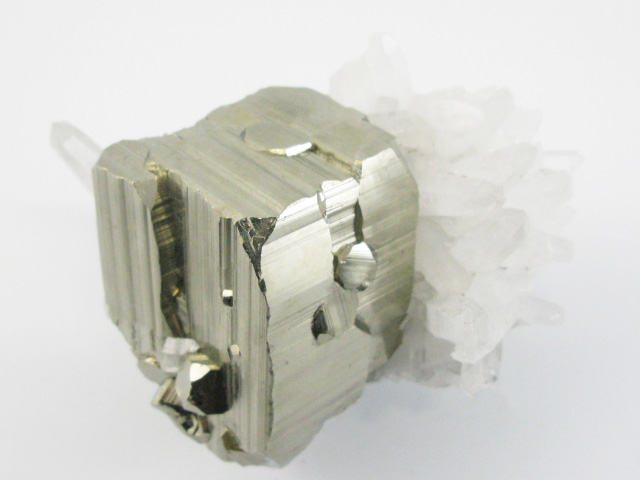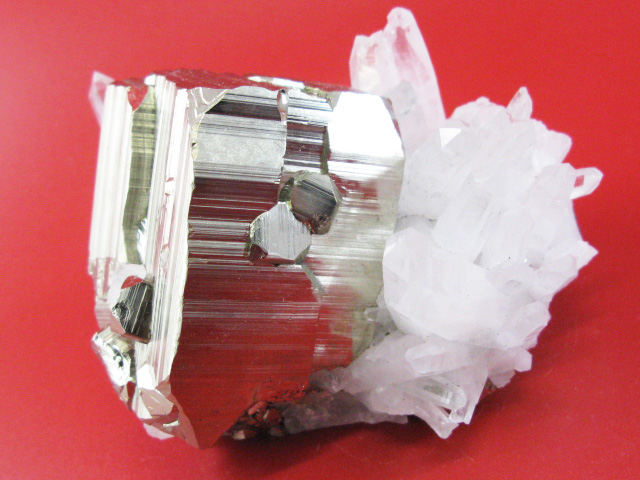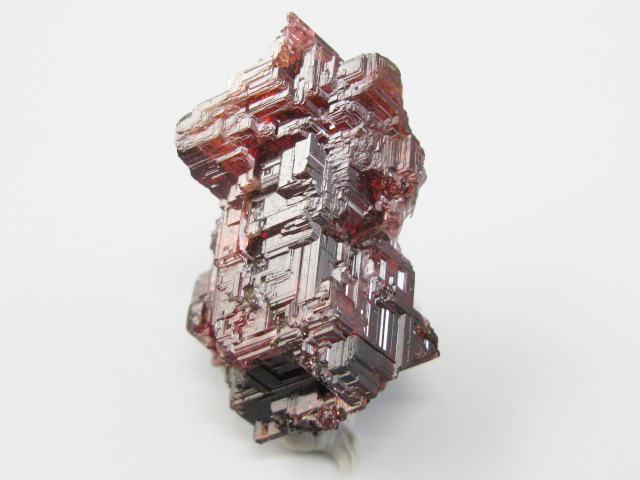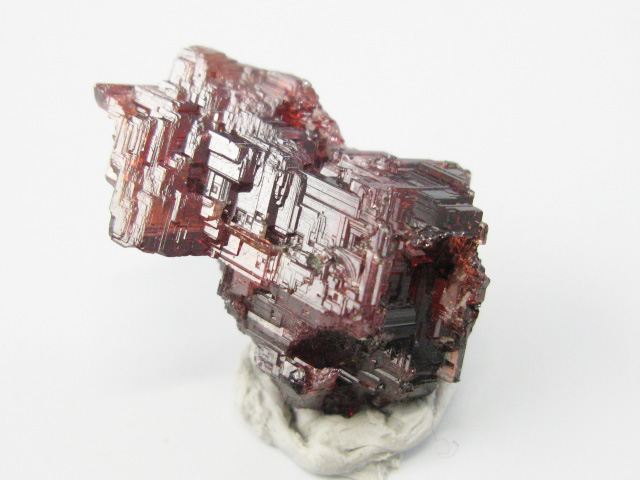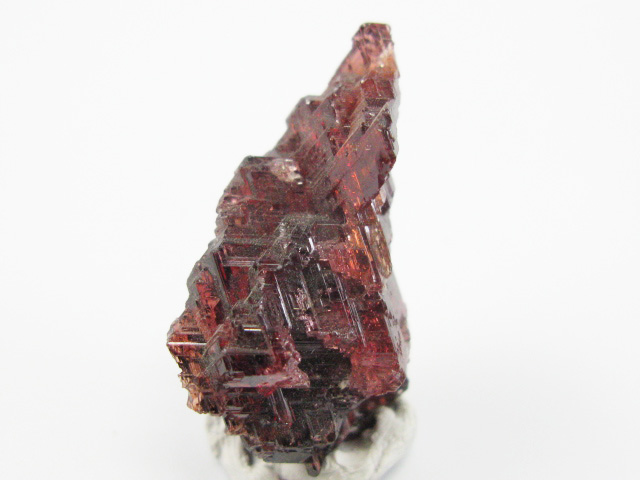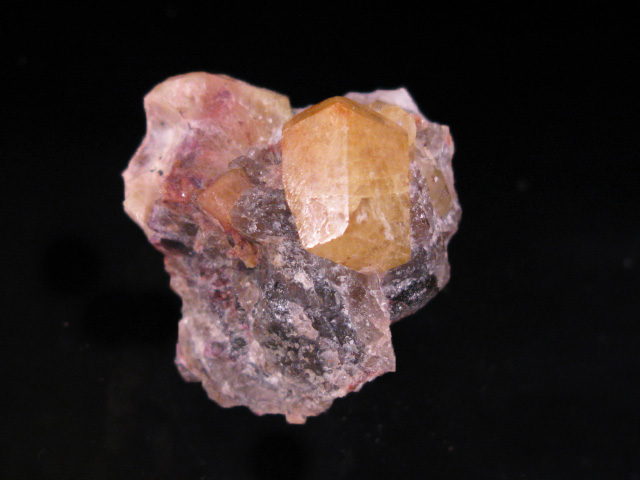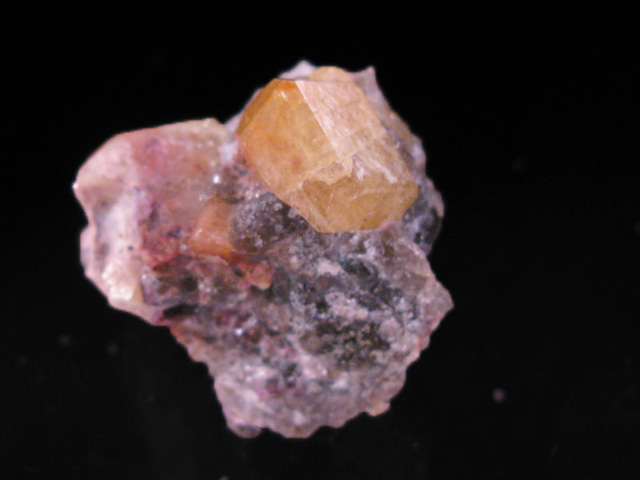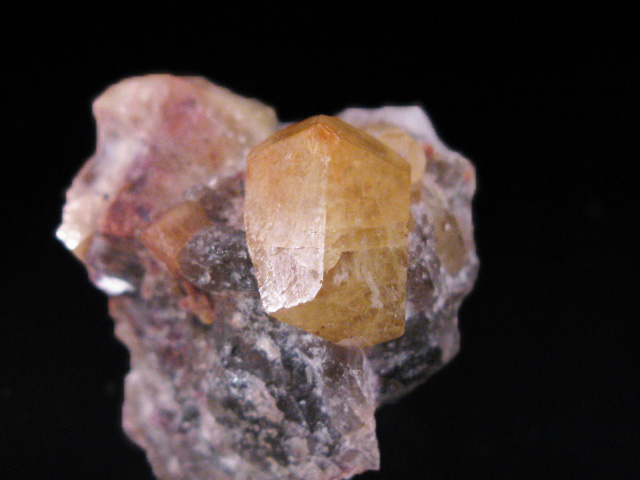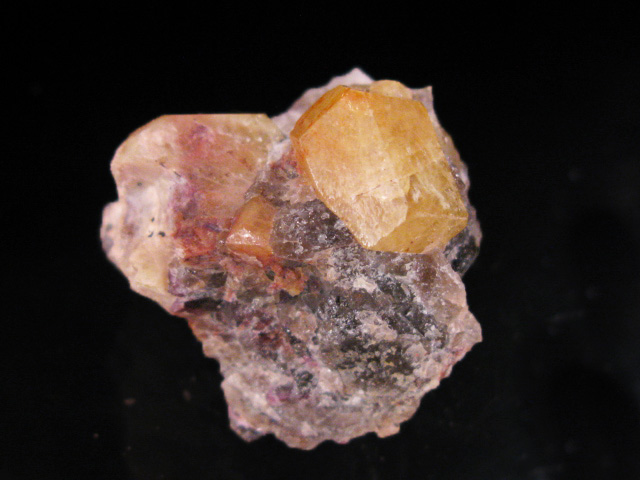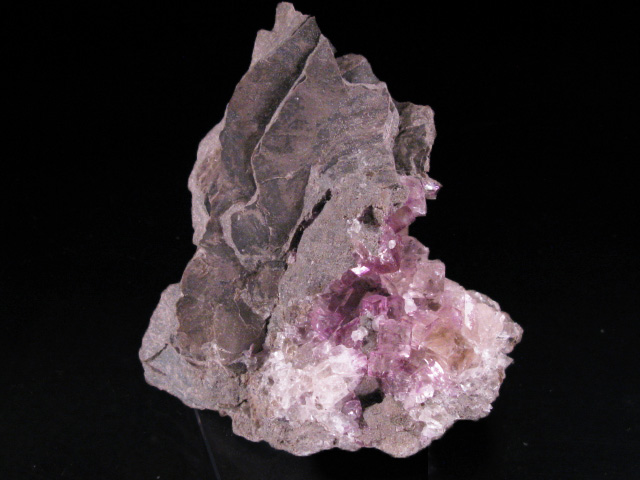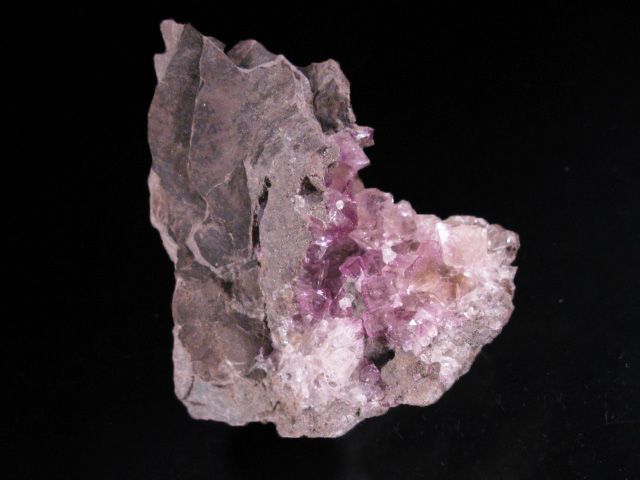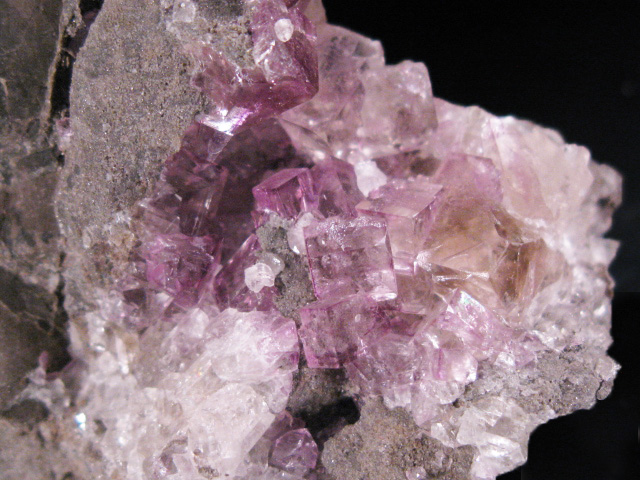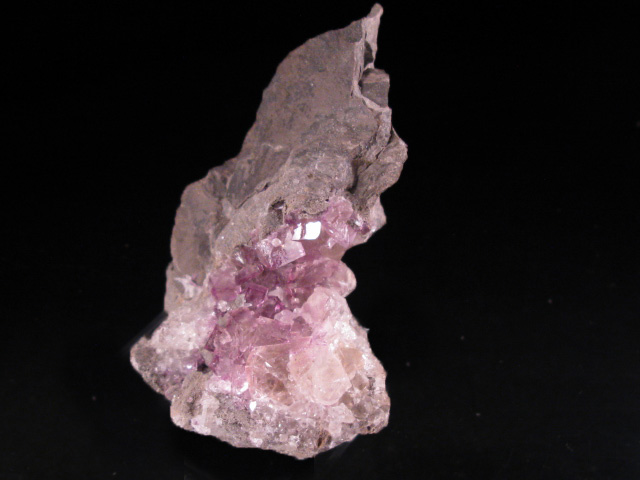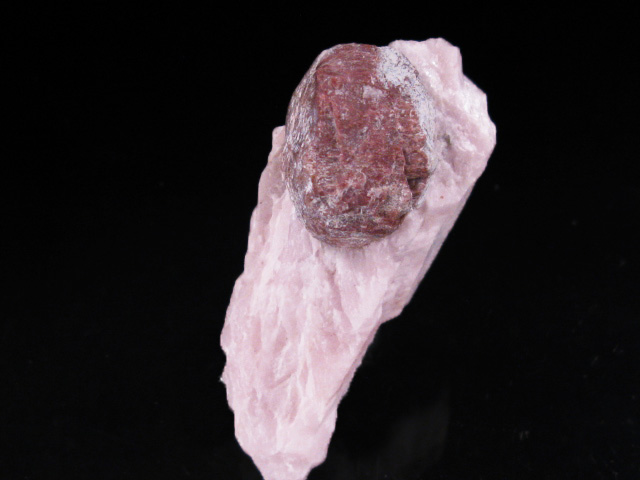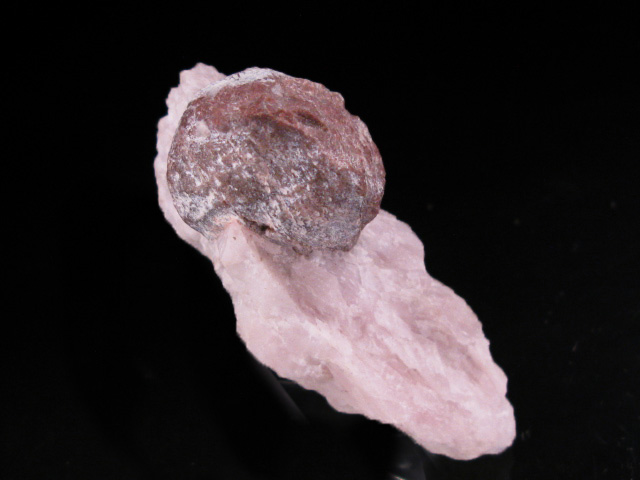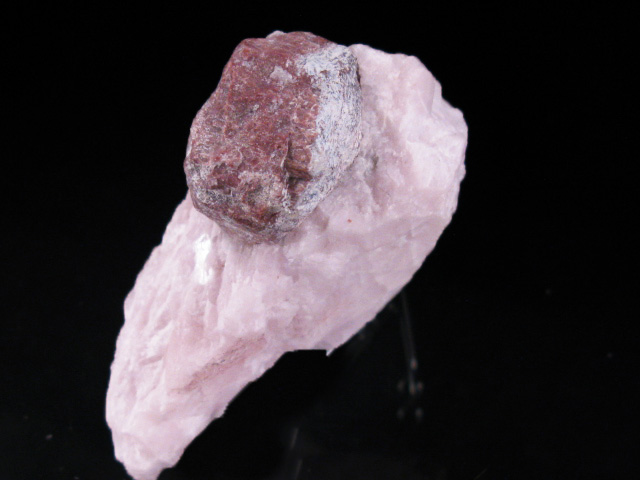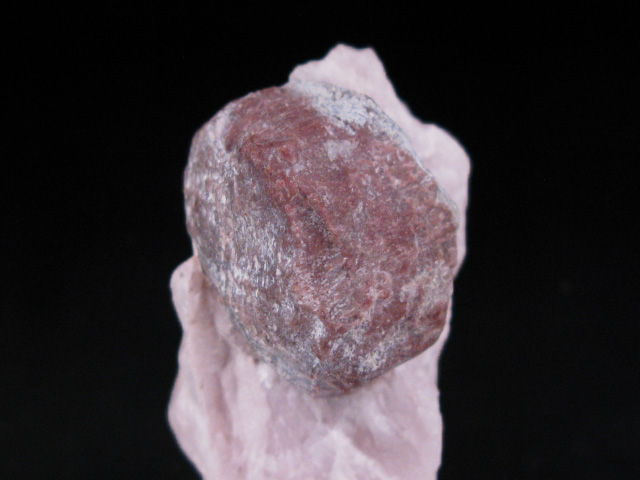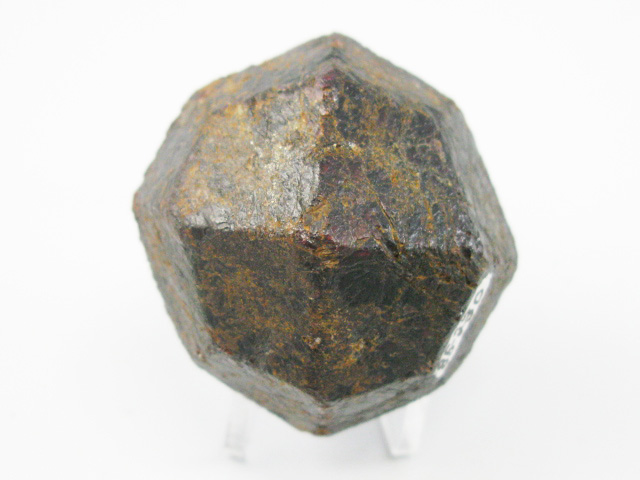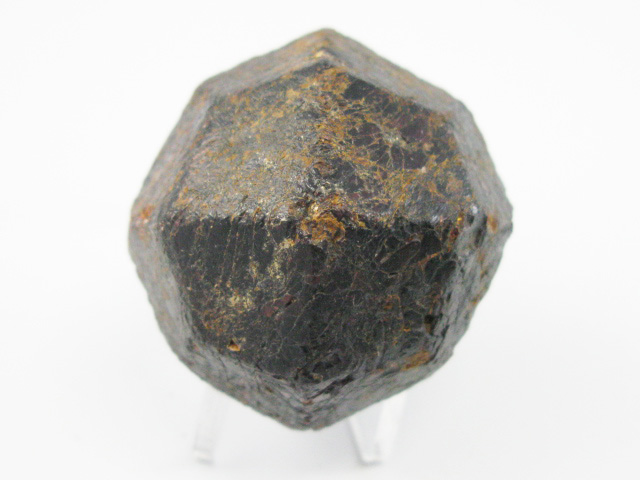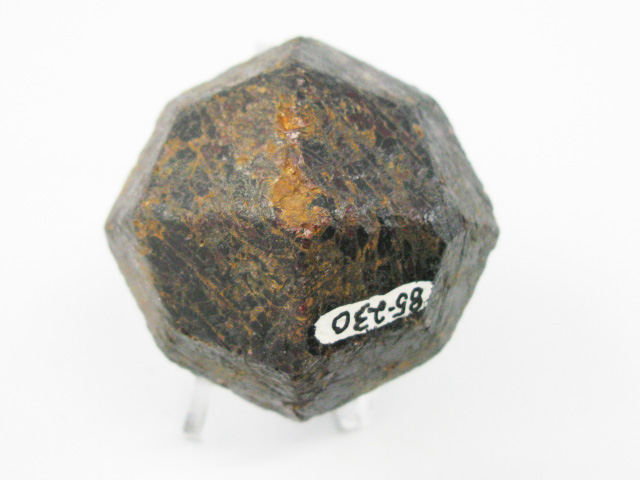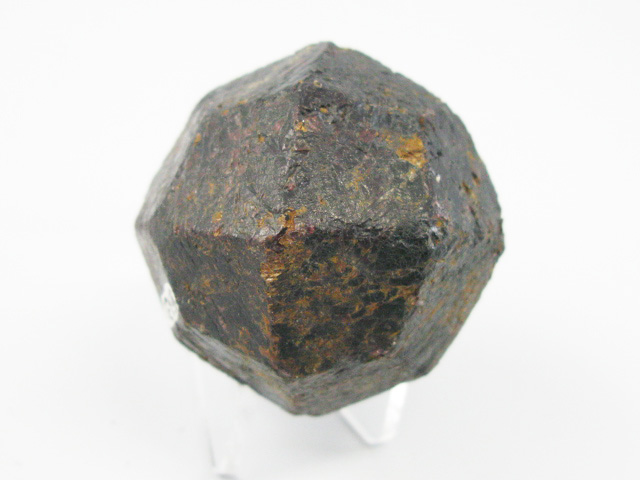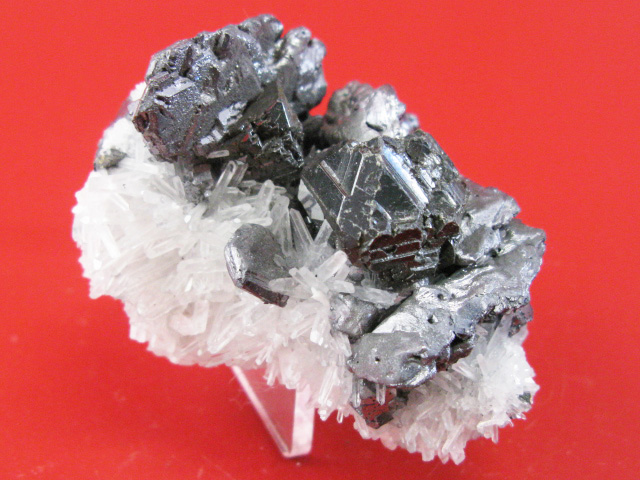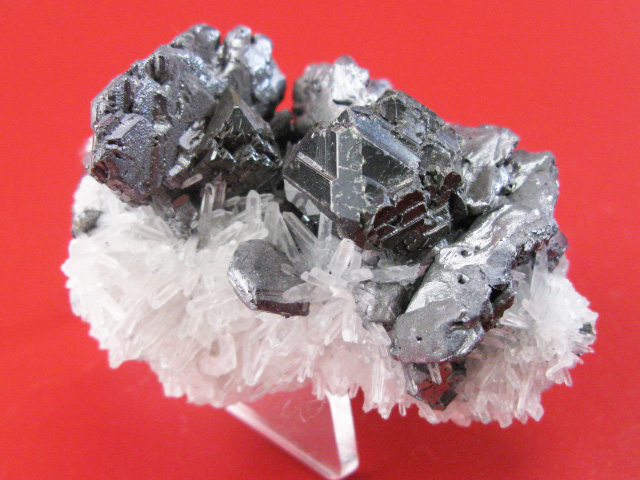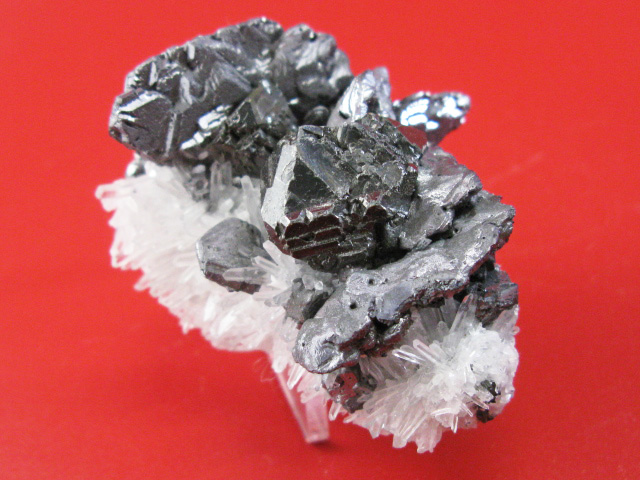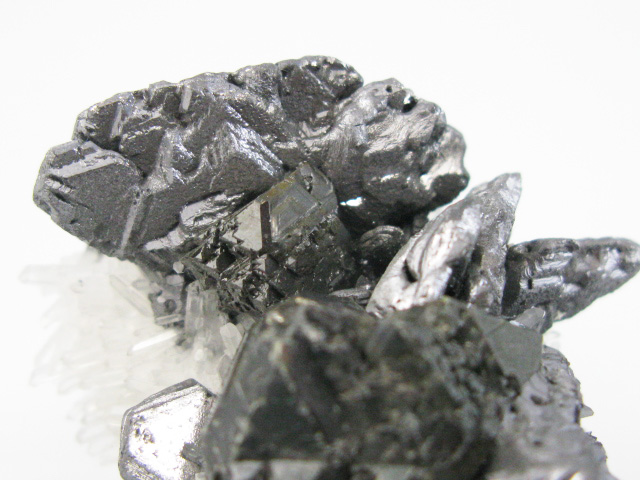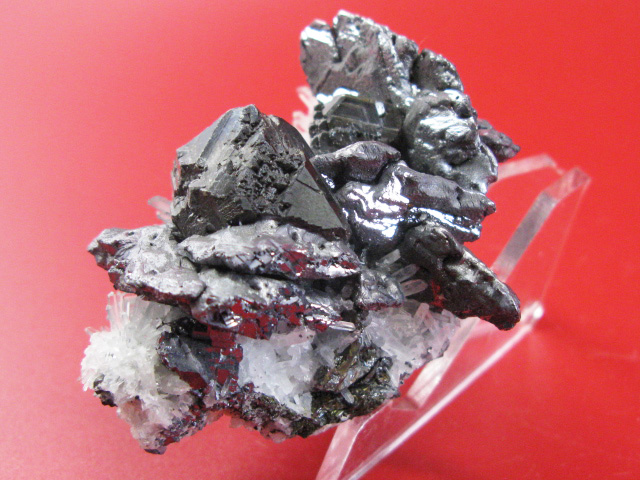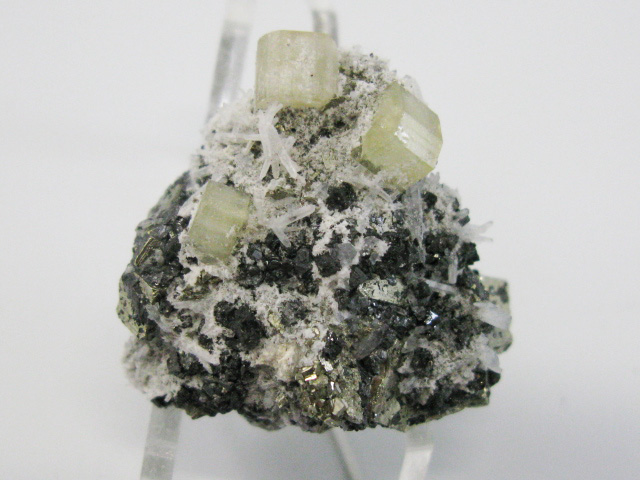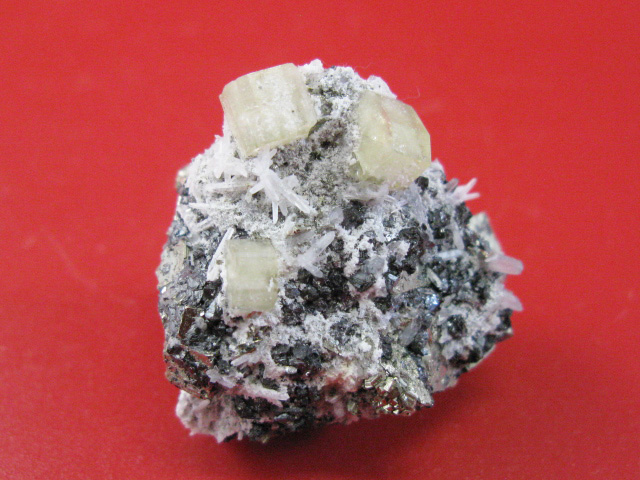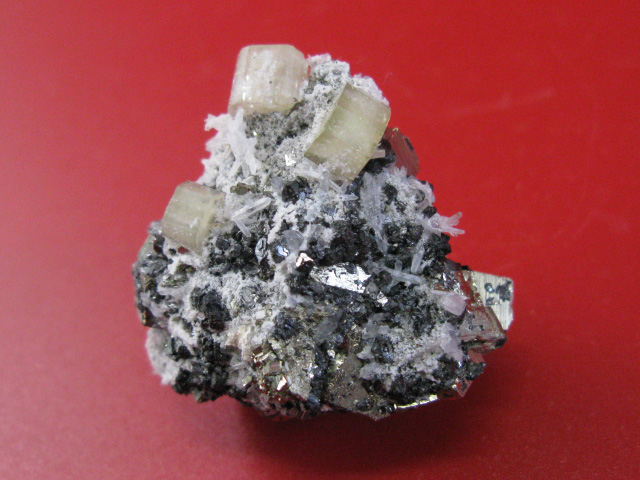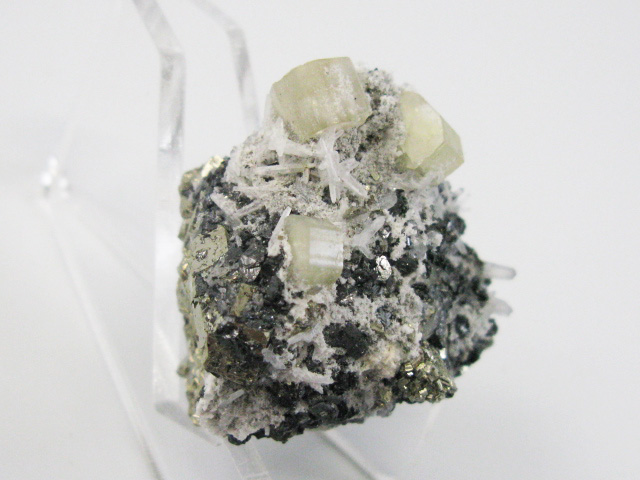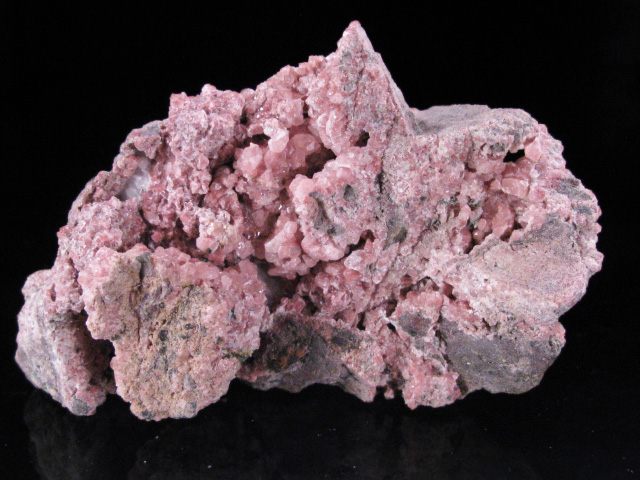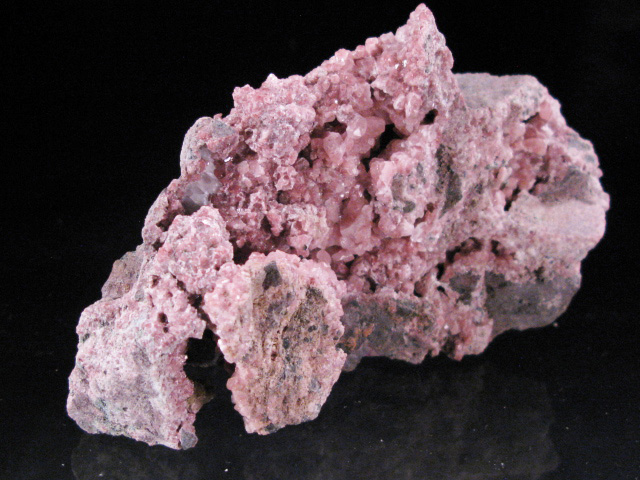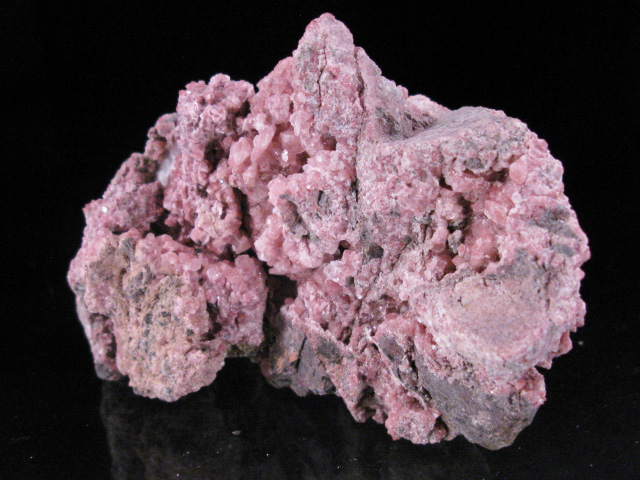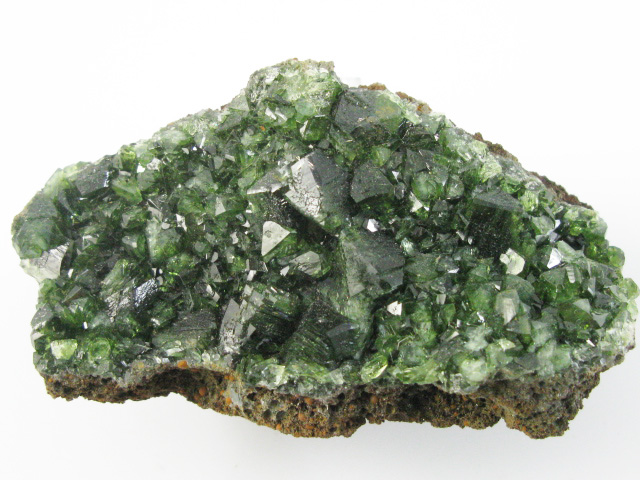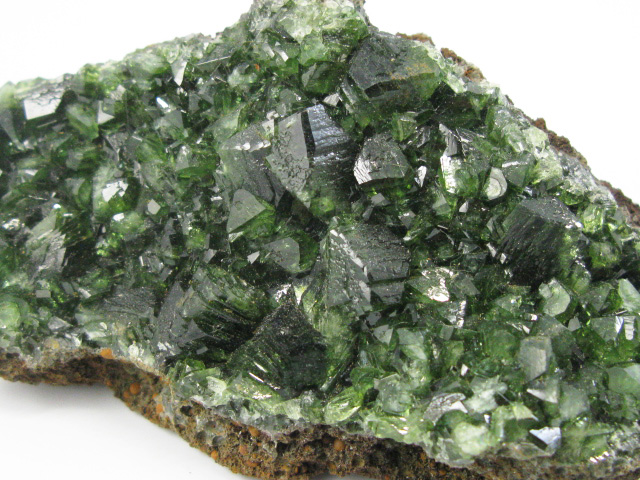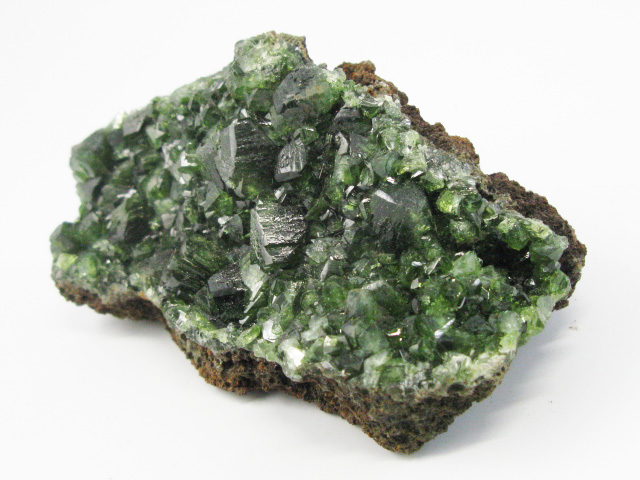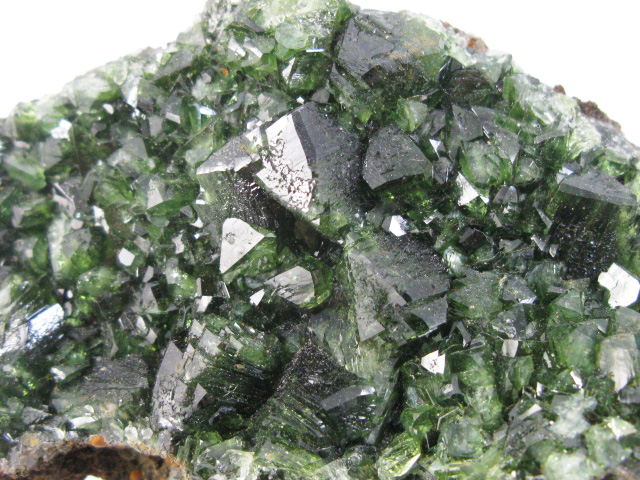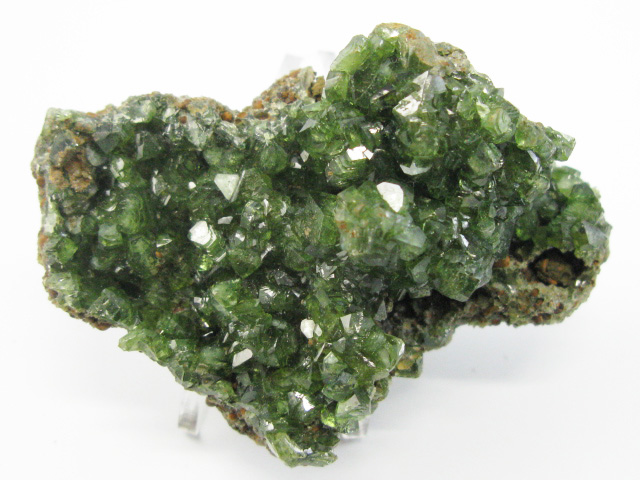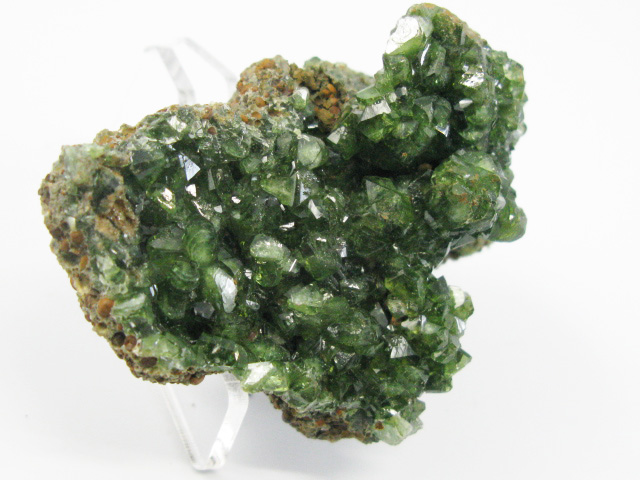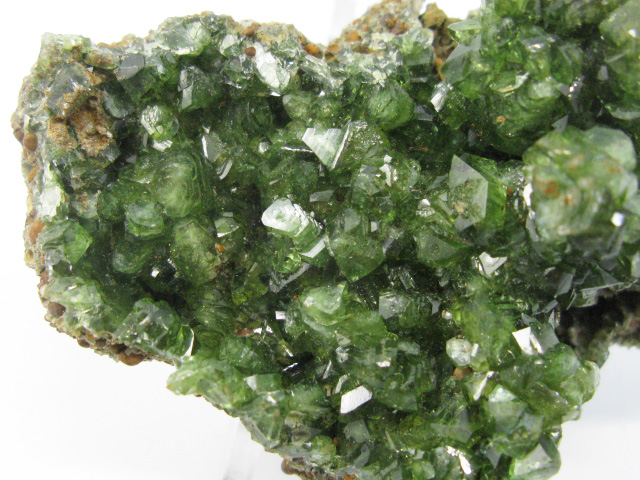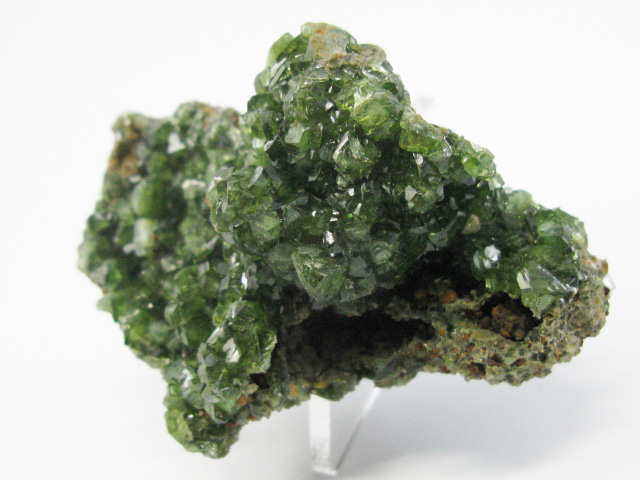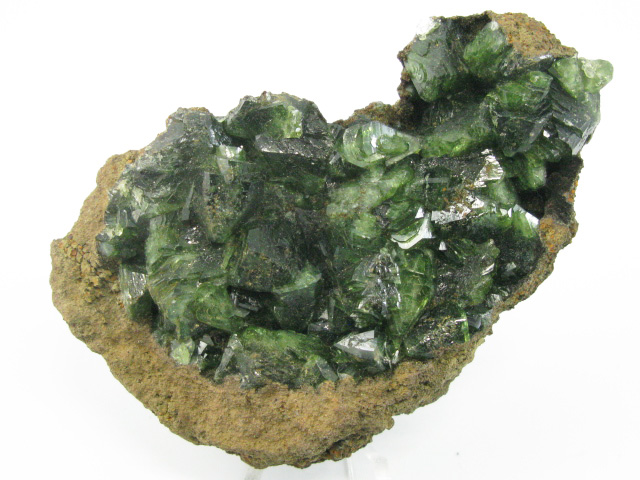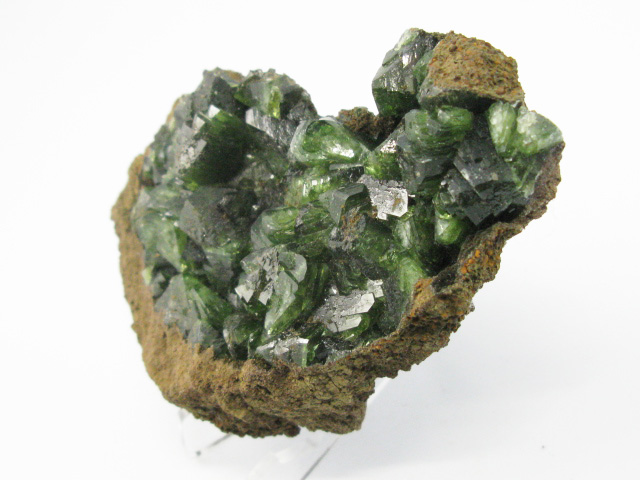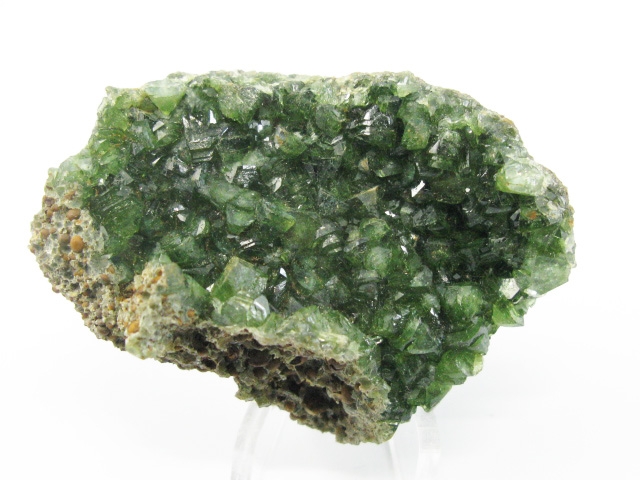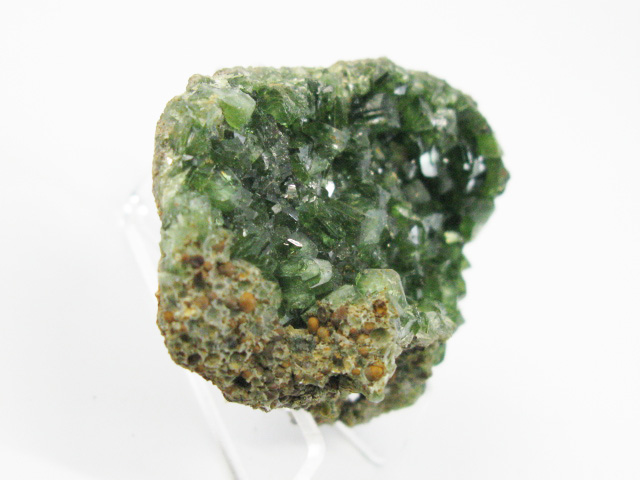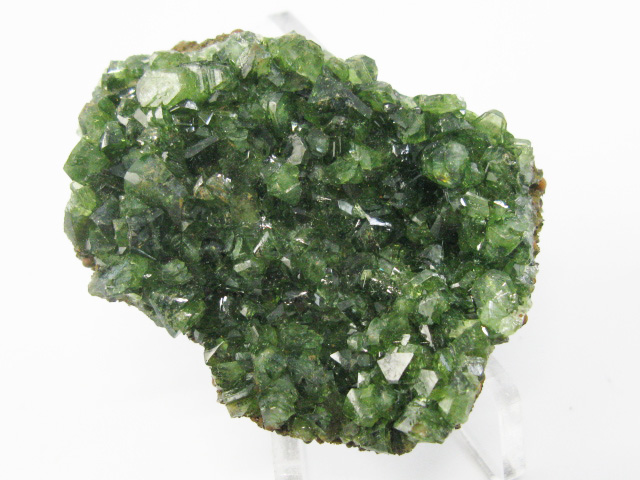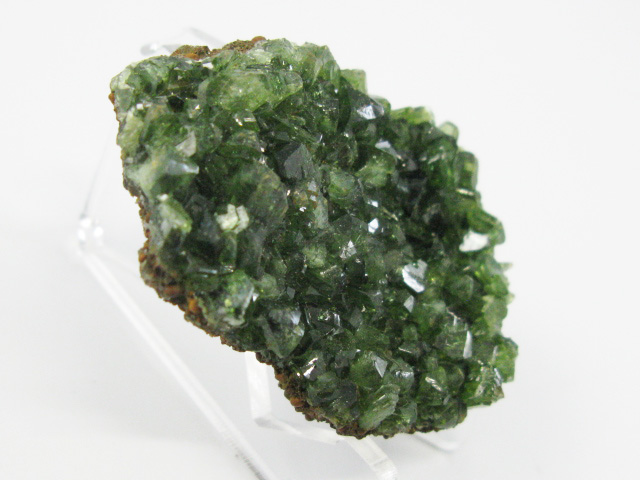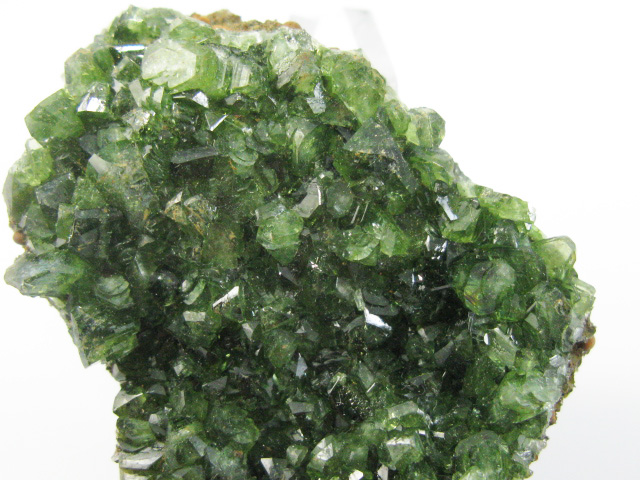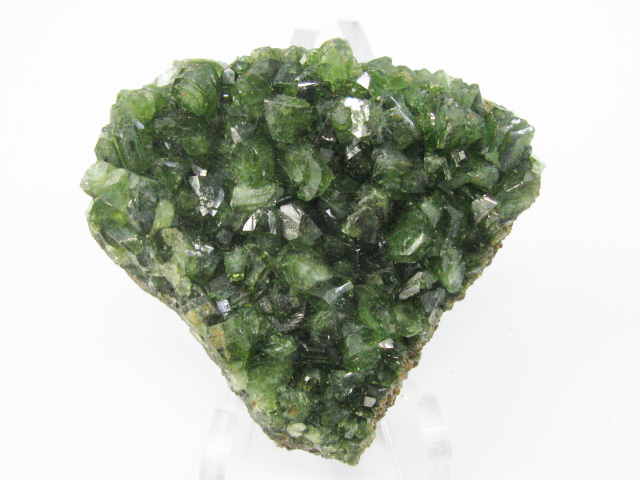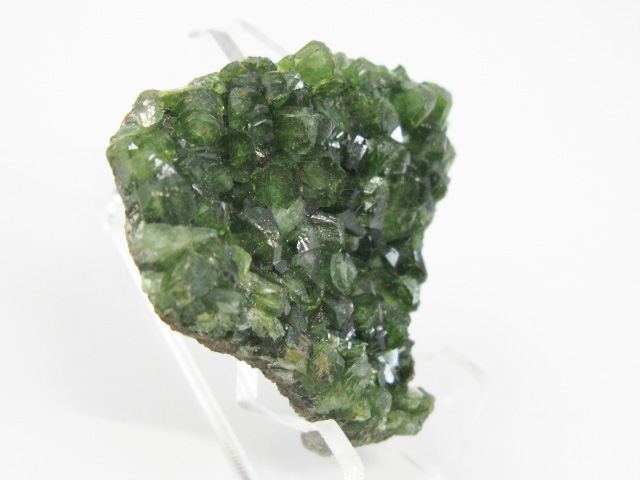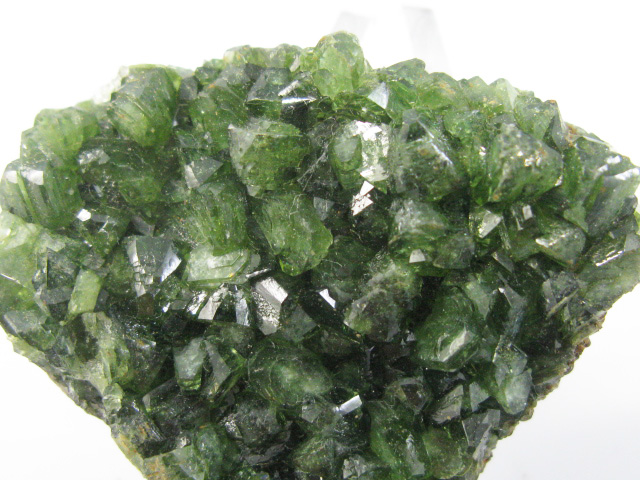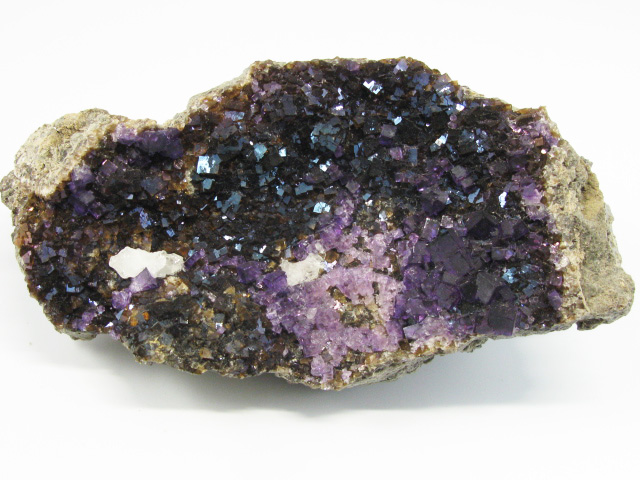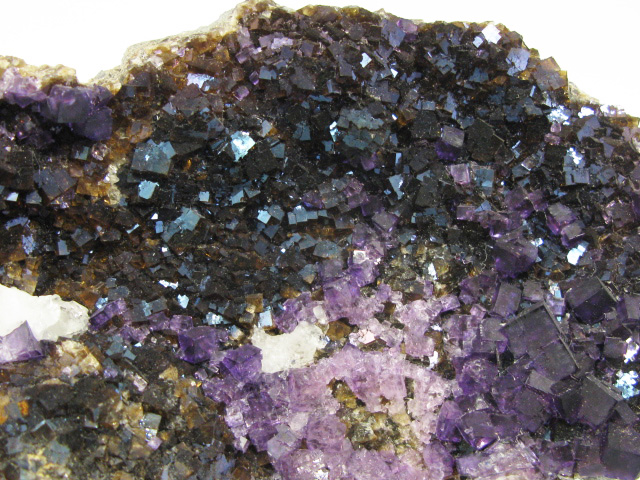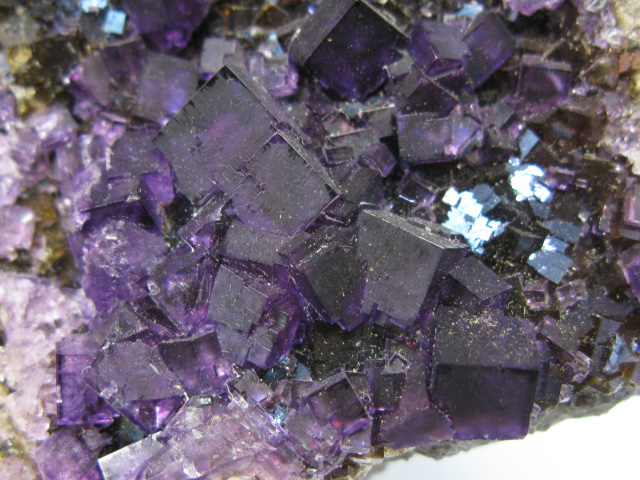Mixed Minerals!
A group mixed minerals from around the world, including American classics, pieces from Peru, Africa, and elsewhere!
KI01 Fluorite
Auglaize Quarry, Junction, Paulding Co., Ohio, United States
16.0x 9.2x 5.7 cm
$1380
A large fluorite from the Auglaize Quarry in Ohio, there are two main fluorite habits that this location is known for-- the zoned purple cubes, and then these interesting combinations of brown fluorite with a later purple generation. This is the latter habit, and a very good representative of that material, being an older piece contains a big filled with crystals. There are also a couple white calcites that give a pleasant accent!
KI02 Rhodochrosite on Cleavlandite
Shengus, Skardu, Pakistan
5.1x 4.4x 2.3 cm
$545
This is among the most unique rhodochrosite specimens I have seen-- a specimen from Pakistan! And for being unique it is actually quite pretty-- often times "unique" when it comes to minerals is more "odd" than "aesthetic." This one has a group of crystals sitting on blady cleavlandite, The crystals do seem to be cleaved on the right side but it is not apparent unless you look very, very closely.
Rhodochrosite from pegmatites in general is not very common-- I've seen a small number examples from places like Brazil or North Carolina (an I guess some of the MSH are pegmatites and a bit more abundant), but this is one of only a couple I have come across from Pakistan. The association with the cleavlandite and position of the crystals also makes it quite appealing
KI03 Fluorite
Mambila Plateau, Taraba State, Nigeria
10.2x 6.1x 5.6 cm
$435
A beautiful specimen from an exciting new find in Nigeria-- day fluorescent fluorite. These have been trickling out over the last few months in a variety of habits that interestingly mimic many of the various appearances form the Weardale Area of England. This one looks a lot like the Rogerly Material, especially with its bright day fluorescence.
Normally I would photograph specimens indoors, but I used my cellphone outside for this one to try and capture the color-- it really is night and day, comparing them outdoors in natural sunlight to what these look like under incandescent lights.
Some minor chipping, but nothing major.
KI04 Fluorite
Mambila Plateau, Taraba State, Nigeria
8.4x 8.6x 8.7 cm
$335
A beautiful specimen from an exciting new find in Nigeria-- day fluorescent fluorite. These have been trickling out over the last few months in a variety of habits that interestingly mimic many of the various appearances form the Weardale Area of England. This one looks a lot like the Rogerly Material, especially with its bright day fluorescence.
Normally I would photograph specimens indoors, but I used my cellphone outside for this one to try and capture the color-- it really is night and day, comparing them outdoors in natural sunlight to what these look like under incandescent lights.
Not perfect, but a good example from the discovery.
KI05 Fluorite
Mambila Plateau, Taraba State, Nigeria
18.8x 16x 9.4 cm
$785
A large specimen from an exciting new find in Nigeria-- day fluorescent fluorite. These have been trickling out over the last few months in a variety of habits that interestingly mimic many of the various appearances form the Weardale Area of England.
This is a particularly large specimen, with numerous crystals making up the cluster. The color is a little darker, though it still shows a degree of day fluorescence when taken outdoors!
KI06 Rhodochrosite
Uchucchacua Mine, Oyon Prov., Lima Dept., Peru
6.9x 5.0x 5.1 cm
$1280
A nice rhodochrosite with relatively large scalenohedral crystals (compared to most of what I've seen) for the locality, all with good red color. This one dates to at least the 90's.
When I first started going to Peru around 2009, these were not abundant, but you could find them with some lucky timing, as they were still occasionally coming to market. Now however, there is probably more of this material outside of Peru than in the country-- on my last trip last year I only saw a couple small crappy ones with exorbitant prices-- this is actually the first time I bought one in the USA! I figured it wasn't cheap, but given the size of the crystals and how hard they are getting to find, it was still worth picking up.
Basically what happened in Peru was that in the early 2000's, the government allowed privatization of many of the country's major ore mines. When the private companies bought up the mines, they changed the policies that governed collecting specimens-- while it had always been discouraged, the new owners made it a fireable offense. But they also increased the miner's wages, to the point that it was no longer worth the risk to collect specimens-- a steady, generous paycheck was no match for the occasional specimen income from infrequent pockets. Actually, you would be surprised how much these guys are paid-- salaries in rural Peru can be around 30,000 USD, with multiple family members often working at the same mine. In Huallanca (near Antamina and Huanzala) the influx of cash has made even tiny plots of land absurdly expensive, I was told around 70K for a 100 by 50 foot plot not he outskirts of town-- and again, this is rural Peru
While that's all great for the locals, it sucks for mineral collectors. Miners at Huanzala seem to have reached a deal with the management, but most of the other producers are now either closed, or do not allow specimen collecting, and that is why there is no more Uchucchacua rhodochrosite.
KI07 Fluorite
Auglaize Quarry, Junction, Paulding Co., Ohio, United States
6.3x 6.7x 4.6 cm
$495
A beautiful fluorite from the Auglaize Quarry in Ohio, there are two main fluorite habits that this location is known for-- the zoned purple cubes, and then these interesting combinations of brown fluorite with a later purple generation. This is the latter habit, and a very good representative of that material, being an older piece contains a bug filled with crystals.
KI08 Fluorite
Mambila Plateau, Taraba State, Nigeria
17.7x 10.0x 7.2 cm
$395
A large plate of lighter colored blue-gray fluorite crystals from a recent find in Nigeria. Nigeria is one of those hidden gems in the mineral word-- it has a number of well known localities and huge potential for specimens, except not much comes out, except for gem rough. This was a surprising recent discovery, and this is a rather good reference from the find.
KI09 Barite with Malachite
Shangulowe Mine, Kambove District, Lualaba, D.R. Congo
5.4x 5.2x 2.9 cm
$385
A beautiful example of barite crystals on matrix, accompanied by contrasting green malachite. Although some material has been found recently, this is an older piece and the arrangement of the crystals, standing upright on their matrix, is quite aesthetic. The three dimensionality of the piece and lack of color contrast between the crystals makes it a little difficult to photograph and convey the form-- a video can be viewed here:
KI10 Ferberite
Tazna Mine,Nor Chichas Prov., Potosi Dept., Bolivia
11.9x 6.8x 5.1 cm
$685
A great example of this iron tungstate-- this one has multiple sharp back crystals sitting on matrix, including a twin that sids sideways on the top-- you usually don't see the twins on matrix. Some edge chipping, but still a good, sizable example of this material from a find made around 2 years ago. Quite good for the price....
KI11 Fluorite
Holloway Quarry, Newport, Monroe Co., Michigan, United Stateso
7.4x 3.5x 3.9 cm
$495
The American Midwest is dotted with quarries that produce everything from road fill to food grade lime and and frac sand. Driving along the interstates in Indiana, Ohio and Michigan you might even recognize the names of various small towns on the highway signs from your mineral labels.
As most of these quarries are seeking calcium bearing materials of one sort or another, it goes without saying that a lot of these locations als have calcite, celestite, and (to a lesser extent) fluorite. While there are a few particular locations that have become particularly famous for their fluorites, Michigan has been largely left out. There is a lot of calcite and celestite in Michigan, but for whatever reason, almost no fluorite. This is a very rare sample from the Holloway quarry-- it probably looks indistinguishable from many of the other brown fluorites that occur across the midwest, but it was obtained from the guy who collected it, so it is not mislabeled. This location produces a lot of calcite and those distinct, included, bar-like celestites, but fluorite is very, very rare from here.
KI14 Pyrite and Quartz
Huanzala Mine, Huallanca District, Dos de Mayo Prov., Peru
11.9x 8.2x 6.5 cm
$595
A nice example of pyrite with quartz from Huanzala. Despite Huanzala producing more pyrite than any other locality on earth, these quartz/ pyrite combinations have never been especially common. Last year they seem to have encountered a zone with more of them however, so I have seen a bit more on the market recently than at any time in the past, over many trips to that country. This one is imperfect, but still quite a beautiful example of this combinatio, with a bright, striated pyrite crystal backed by a cluster of white quartz crystals.
KI15 Spessartine Garnet
Navegadora Mine, Conselheiro Pena, Minas Gerais, Brazil
3.4x 2.2x 1.5 cm
$195
A pretty example of very etched translucent spessartine from the famous find made around 2003.
KI16 Rhodizite-Londonite
Antsongombato, Betafo Region, Madagascar
3.9x 3.1x 3.3 cm
$145
A very nice example of yellow rhodizite-londonite on matrix, from Antsongambato in central Madagascar. This rare borate is known from a few localities world wide (interestingly the type locality is in Russia), but the only place you will ever actually see a well-crystalized specimen from is Madagascar.
KI18 Fluorite
Blufton, Allen Co., Ohio, United States
8.7x 7.8x 3.7 cm
$285
A large fluorite specimen from one of the lesser known Ohio fluorite localities--the Bluffton Stone Co. Quarry. This quarry operated since at least 1910, though these were discovered by a field collector in 1996-- I have no idea if the quarry is still operational.
Either way, this is a rather good example for the locality, with numerous purple and yellow crystals on a chunk of sedimentary rock. Not perfect (damage around the edges where the fluorite was removed) but still quite good for this unusual Ohio locality.
KI19 Willemite
Stirling Hill Mine, Ogdensburg, New Jersey, United States
7.3x 2.3x 3.8 cm
$185
A good example of this zinc silicate from a classic US locality, best known for it's fluorescent minerals.
KI20 Garnet
Unknown
4.7x 4.6x 4.6 cm
$120
While I usually prefer not to post items without localities or even specific species names (though if I'd have to guess I'd say this is a spessartine) I do think that the shape of this golf ball-like garnet is particularly satisfying. If this were a dodecahedron I wouldn't bother, but it's a nearly perfect 24-sided trapezohedron, it makes it a little more fun to look at. The pictures all look the same but you can kind of judge the orientation based on the position of the painted on label.
KI21 Galena (Spinel Twins) and Sphalerite on Quartz
Palomo Mine, Castrovirreyna Prov., Huancavelica Dept., Peru
6.0x 4.5x 4.0 cm
$165
If you like Peruvian minerals, you will might note that this is something of an oddity. Galena to begin with, despite the abundance of sulfides from Peru, has never exactly been common except for a short period when Palomo was producing (when this one was found) and then the odd pocket from Huanzala. And for the country, these are rather large spinel twins.
While most galenas you encounter tend to be cubes, dodecahedrons or octahedrons, there are also a handful of localities that produce these flattened twins, most notably in Bulgaria and Russia. They do turn up from time to time in other places-- there were a couple notable pockets at the Fletcher Mine in Missouri, and I have seen small crystals from Huanzala. I thought this was rather interesting because it is from the Palomo Mine, the locality almost exclusively produced dodecahedrons and modified cubo-dodecahedrons. I had to check back through my purchase notes to make sure I had the locality right-- but apparently they did find a couple pockets of this stuff around 2010.
KI22 Apatite on Pyrite
Huanzala Mine, Huallanca District, Dos de Mayo Prov., Peru
3.6x 2.6x 3.5 cm
$140
A nice example of light yellow apatite on pyrite, from a find made last year at the Huanzala Mine. Apatite has always been something of a rarity from Huanzala (and Peru in general) though this pocket was the most Peruvian apatite I have seen in any one place at one time.
KI23 Datolite
Keweenaw Peninsula, Michigan, United States
9.6x. 6.0x 5.1 cm
$495
This is not a showy rock, though if you like Michigan minerals, it is quit special-- datolite CRYSTALS. Datolites from the Upper Peninsula are not uncommon, but almost all of them occur as nodules of varying color and patterns from various localities, all with different levels of desirability. Crystals however, are much less common. This is a cabinet specimen from an old collection, the vuggy display face is covered with small pinkish crystals.
KI24 Ludlamite
Cabeca do Cachorro, Sao Gabriel da Cachoeira, Amazonas, Brazil
9.9x 5.6x 5.1 cm
$495
A great ludlamite specimen from Brazil. I consider these Brazilian pieces to be the second best in the world, after the Bolivian ones from Huanuni. The Bolivian crystals can reach much larger sizes (but only rarely, the average is around 1 cm), though there is also never quite as much on one single piece.
These days you basically only see ludlamite from 2 locations-Bolivia and here. While specimens are known from Santa Eulalia (Mexico), Idaho, and Kosovo, the first two mainly produced in the 60's and 70's, and the pieces from Kosovo were never abundant. There have been a few months of quite abundant production at this location, though the vast majority of what has come out is vivianite.
I don't know how much of this material there will or will not be, but I can confidently say that these are very exceptional examples of the mineral for the price, and right now they are cheaper than they were in the past and probably cheaper than they will be in the future.
KI25 Ludlamite
Cabeca do Cachorro, Sao Gabriel da Cachoeira, Amazonas, Brazil
8.0x 5.0x 3.9 cm
$365
A great ludlamite specimen from Brazil. I consider these Brazilian pieces to be the second best in the world, after the Bolivian ones from Huanuni. The Bolivian crystals can reach much larger sizes (but only rarely, the average is around 1 cm), though there is also never quite as much on one single piece.
These days you basically only see ludlamite from 2 locations-Bolivia and here. While specimens are known from Santa Eulalia (Mexico), Idaho, and Kosovo, the first two mainly produced in the 60's and 70's, and the pieces from Kosovo were never abundant. There have been a few months of quite abundant production at this location, though the vast majority of what has come out is vivianite.
I don't know how much of this material there will or will not be, but I can confidently say that these are very exceptional examples of the mineral for the price, and right now they are cheaper than they were in the past and probably cheaper than they will be in the future.
KI26 Ludlamite
Cabeca do Cachorro, Sao Gabriel da Cachoeira, Amazonas, Brazil
10.1x 6.4x 2.6 cm
$300
A great ludlamite specimen from Brazil. I consider these Brazilian pieces to be the second best in the world, after the Bolivian ones from Huanuni. The Bolivian crystals can reach much larger sizes (but only rarely, the average is around 1 cm), though there is also never quite as much on one single piece.
These days you basically only see ludlamite from 2 locations-Bolivia and here. While specimens are known from Santa Eulalia (Mexico), Idaho, and Kosovo, the first two mainly produced in the 60's and 70's, and the pieces from Kosovo were never abundant. There have been a few months of quite abundant production at this location, though the vast majority of what has come out is vivianite.
I don't know how much of this material there will or will not be, but I can confidently say that these are very exceptional examples of the mineral for the price, and right now they are cheaper than they were in the past and probably cheaper than they will be in the future.
KI27 Ludlamite
Cabeca do Cachorro, Sao Gabriel da Cachoeira, Amazonas, Brazil
6.4x 4.5x 2.9 cm
$195
A great ludlamite specimen from Brazil. I consider these Brazilian pieces to be the second best in the world, after the Bolivian ones from Huanuni. The Bolivian crystals can reach much larger sizes (but only rarely, the average is around 1 cm), though there is also never quite as much on one single piece.
These days you basically only see ludlamite from 2 locations-Bolivia and here. While specimens are known from Santa Eulalia (Mexico), Idaho, and Kosovo, the first two mainly produced in the 60's and 70's, and the pieces from Kosovo were never abundant. There have been a few months of quite abundant production at this location, though the vast majority of what has come out is vivianite.
I don't know how much of this material there will or will not be, but I can confidently say that these are very exceptional examples of the mineral for the price, and right now they are cheaper than they were in the past and probably cheaper than they will be in the future.
KI28
Cabeca do Cachorro, Sao Gabriel da Cachoeira, Amazonas, Brazil
5.0x 3.8x 1.4 cm
$175
A great ludlamite specimen from Brazil. I consider these Brazilian pieces to be the second best in the world, after the Bolivian ones from Huanuni. The Bolivian crystals can reach much larger sizes (but only rarely, the average is around 1 cm), though there is also never quite as much on one single piece.
These days you basically only see ludlamite from 2 locations-Bolivia and here. While specimens are known from Santa Eulalia (Mexico), Idaho, and Kosovo, the first two mainly produced in the 60's and 70's, and the pieces from Kosovo were never abundant. There have been a few months of quite abundant production at this location, though the vast majority of what has come out is vivianite.
I don't know how much of this material there will or will not be, but I can confidently say that these are very exceptional examples of the mineral for the price, and right now they are cheaper than they were in the past and probably cheaper than they will be in the future.
KI29 Ludlamite
Cabeca do Cachorro, Sao Gabriel da Cachoeira, Amazonas, Brazil
5.0x 4.4x 0.9 cm
$168
A great ludlamite specimen from Brazil. I consider these Brazilian pieces to be the second best in the world, after the Bolivian ones from Huanuni. The Bolivian crystals can reach much larger sizes (but only rarely, the average is around 1 cm), though there is also never quite as much on one single piece.
These days you basically only see ludlamite from 2 locations-Bolivia and here. While specimens are known from Santa Eulalia (Mexico), Idaho, and Kosovo, the first two mainly produced in the 60's and 70's, and the pieces from Kosovo were never abundant. There have been a few months of quite abundant production at this location, though the vast majority of what has come out is vivianite.
I don't know how much of this material there will or will not be, but I can confidently say that these are very exceptional examples of the mineral for the price, and right now they are cheaper than they were in the past and probably cheaper than they will be in the future.
LAMD01 Fluorite
Auglaize Quarry, Junction, Paulding Co., Ohio, United States
17.0x 8.7x 6.4 cm
$1450


